 |
| khajuraho-temples-india-1280x800 |
The
Grandeur of Khajuraho
Khajuraho (Hindi: खजुराहो) is a village in the Indian state of Madhya Pradesh,
located in Chhatarpur District, about 385 miles (620 kilometres) southeast of
Delhi, the capital city of India.
The Khajuraho group of
monuments has been listed as a UNESCO World Heritage Site.
One of the most popular tourist
destinations in India, Khajuraho has the largest group of medieval Hindu and
Jain temples, famous for their erotic sculpture. The name Khajuraho, ancient
"Kharjuravahaka", is derived from the Sanskrit word kharjur meaning
date palm.
The art of Madhya Pradesh at
once brings in to mind the exuberant art and the creativity immortalized in the
figurative molds in the temples of Khajuraho. Viswanatha Temple The temples
of Khajuraho are one of India’s major attractions. Once a great Chandella capital,
Khajuraho is now a quiet village of over 6000 people. The temples are superb examples
of Indo-Aryan architecture, but it’s the decorations with which they are so
liberally embellished, that have made Khajuraho famous.
Around the temples are bands of
exceedingly fine and artistically carved stonework. There are sculptors, which
have shown many aspects of Indian life, 1000 years ago - gods and goddesses,
warriors and musicians, real and mythological animals. These temples were built by the
Chandellas, a dynasty that survived for five centuries before falling to the
onslaught of Islam. Almost all Khajuraho’s temples record a century long burst
of creative genius from 950- 1050 A.D.
Basically all the temples
follow a three-part layout. You enter the temple through a porch, known as the
Ardhamandapa. Behind this is the hall or
Mahamandapa, supported with pillars and with a corridor around it. A vestibule
then leads into the Garbhagriha, the inner sanctum, where the image of the god
to which the temple is dedicated is displayed.
The temples are almost all
aligned east to west, with the entrance facing east. Some of the earliest
temples were made of granite, or granite and sandstone but all the ones from
the classic period of Khajuraho's history are made completely of sandstone.
The whole area was enclosed by
a wall with eight gates, each flanked by two golden palm trees. There were
originally over 80 Hindu temples, of which only 25 now stand in a reasonable
state of preservation, scattered over an area of about 8 square miles (21 km²). The temples of Khajuraho
suffered destruction by early Muslim invaders between c.1100-1400 AD as various disfigured
statues at the temple complex attest.
Today, the temples serve as
fine examples of Indian architectural styles that have gained popularity due to
their explicit depiction of the traditional way of sexual life during medieval
times.
Locals living in the Khajuraho
village always knew about and kept up the temples as best as they could. They
were pointed out to an English man in late 19th century and the jungles had
taken a toll on all of the monuments.
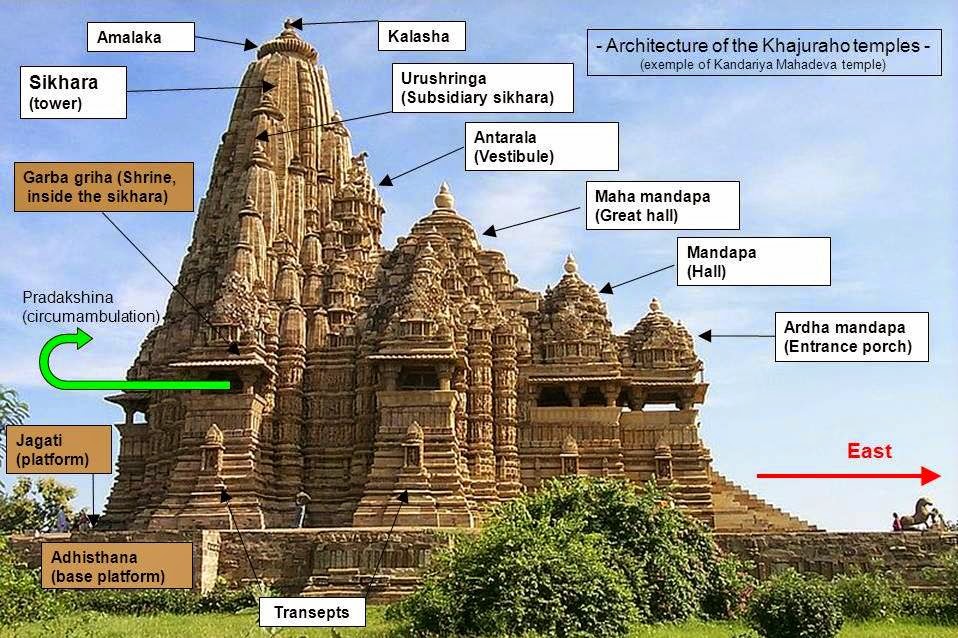 |
Architecture of the Khajuraho temples
|
The Khajuraho temples,
constructed with spiral superstructures, adhere to a northern Indian shikhara
temple style and often to a Panchayatana plan or layout. A few of the temples are
dedicated to the Jain pantheon and the rest to Hindu deities - to God's Trio,
Brahma, Vishnu and Shiva, and various Devi forms, such as the Devi Jagadambi
temple.
A Panchayatana temple had four
subordinate shrines on four corners and the main shrine in the center of the
podium, which comprises their base. The temples are grouped into three
geographical divisions: western, eastern and southern.
With a graded rise secondary
shikharas (spires) cluster to create an appropriate base for the main shikhara
over the sanctum. Kandariya Mahadeva, one of the most accomplished temples of
the Western group, comprises eighty-four shikharas, the main being 116 feet
from the ground level.
The Khajuraho temples are made
of sandstone, they didn't use mortar the stones were put together with mortise
and tenon joints and they were held in place by gravity. This form of construction
requires very precise joints. The columns and architraves were built with
megaliths that weighed up to 20 tons.
These shikharas – subordinate
and main – attribute to the Khajuraho temples their unique splendor and special
character. With a graded rise of these
shikharas from over the ardhamandapa, porch, to mandapa, assembly hall,
mahamandapa, principal assembly hall, antarala, vestibule, and garbhagriha,
sanctum sanctorum, the Khajuraho temples attain the form and glory of gradually
rising Himalayan peaks.
The name Khajuraho, or Kharjuravāhaka,
is derived from ancient Sanskrit (kharjura, खर्जूर means date palm, and vāhaka, वाहक
means "one who carries" or bearer). Local legends state that the
temples had two golden date-palm trees as their gate (missing when they were
rediscovered).
Khajuraho is one of the four
holy sites linked to deity Shiva (the other three are Kedamath, Kashi and Gaya).
Its origin and design is a subject of scholarly studies. Shobita Punja has
proposed that the temple’s origin reflect the Hindu mythology in which
Khajuraho is the place where Shiva got married; with Raghuvamsha verse 5.53,
Matangeshvara honoring ‘’Matanga’’, or god of love.
These temples of Khajuraho have
sculptures that look very realistic and are studied even today.
'Kamasutra'
Endless at Khajuraho
The Khajuraho temples do not contain sexual or erotic
art inside the temple or near the deities; however, some external carvings bear
erotic art. Also, some of the temples that have two layers of walls have small
erotic carvings on the outside of the inner wall. There are many
interpretations of the erotic carvings. They portray that, for seeing the
deity, one must leave his or her sexual desires outside the temple. They also
show that divinity, such as the deities of the temples, is pure like the atman,
which is not affected by sexual desires and other characteristics of the
physical body.
It has been suggested that these suggest tantric sexual practices. Meanwhile,
the external curvature and carvings of the temples depict humans, human bodies,
and the changes that occur in human bodies, as well as facts of life. Some 10%
of the carvings contain sexual themes; those reportedly do not show deities,
they show sexual activities between people. The rest depict the everyday life
of the common Indian of the time when the carvings were made, and of various activities
of other beings. A common misconception is that, since the old structures with
carvings in Khajuraho are temples, the carvings depict sex between deities.
However the kama arts represent diverse sexual expressions of different human
beings. The vast majority of arts depict various aspects the everyday life,
mythical stories as well as symbolic display of various secular and spiritual
values important in Hindu tradition. For example, depictions show women putting
on makeup, musicians making music, potters, farmers, and other folks in their
daily life during the medieval era. These scenes are in the outer padas as is
typical in Hindu temples.
*NOTE: SOME OF THE SCULPTED IMAGES ON THIS PAGE ARE EROTIC IN NATURE
 |
| A view on the famous temples |
 |
| Between the skies and bushes |
 |
| A closer look at a temple in Khajuraho |
 |
| Adinath Temple |
 |
| Adinath_Jain_Temple_Khajuraho_12 |
 |
Admiring Khajuraho...The lady Brigade
|
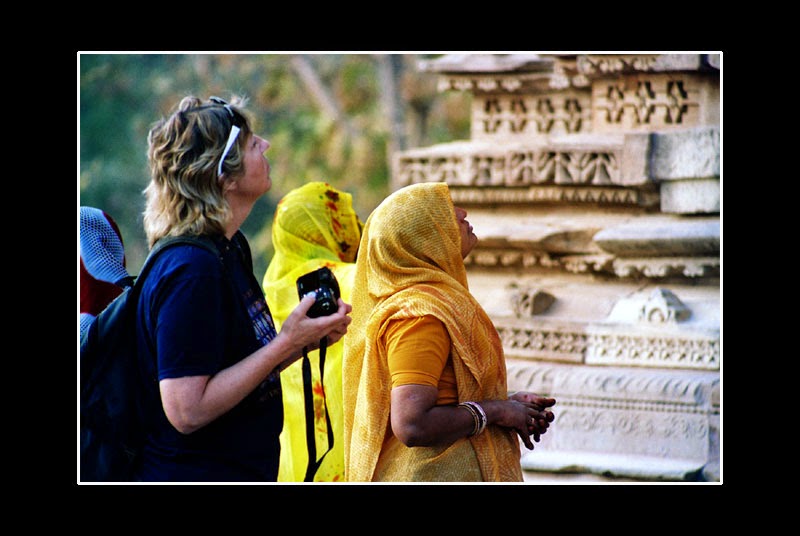 |
| Admiring Khajuraho. |
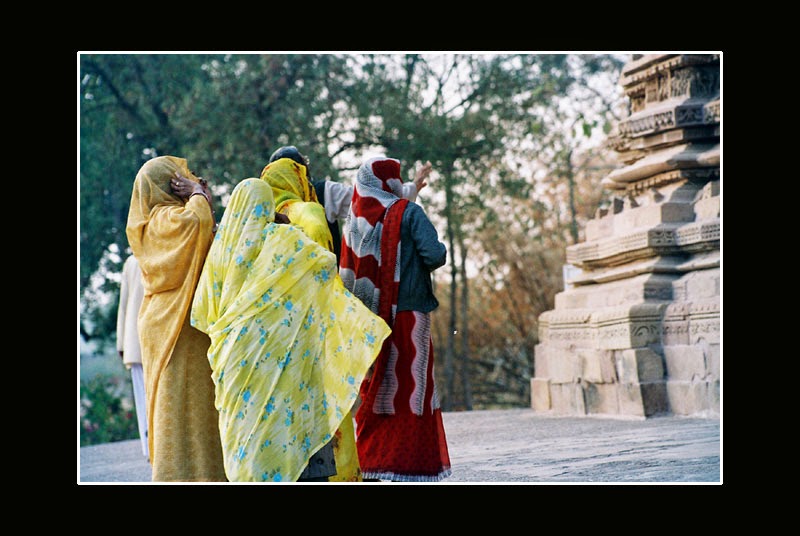 |
| Admiring Khajuraho |
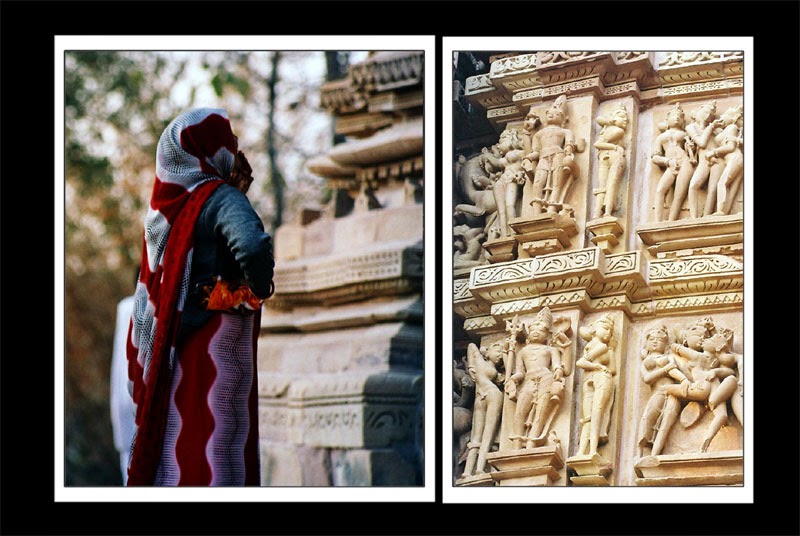 |
| Admiring Khajuraho |
 |
| Chitragupta Temple |
 |
| Finest Carvings for the Kamasutra |
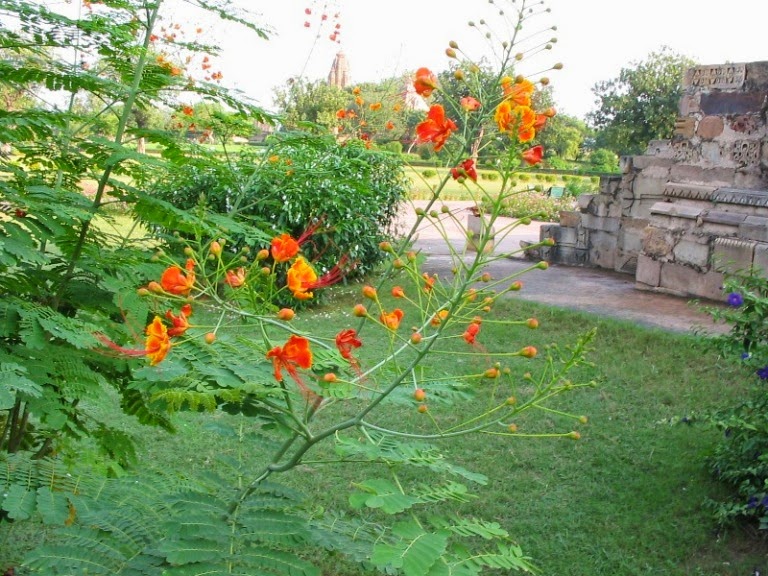 |
| Flowers in Khadjuraho |
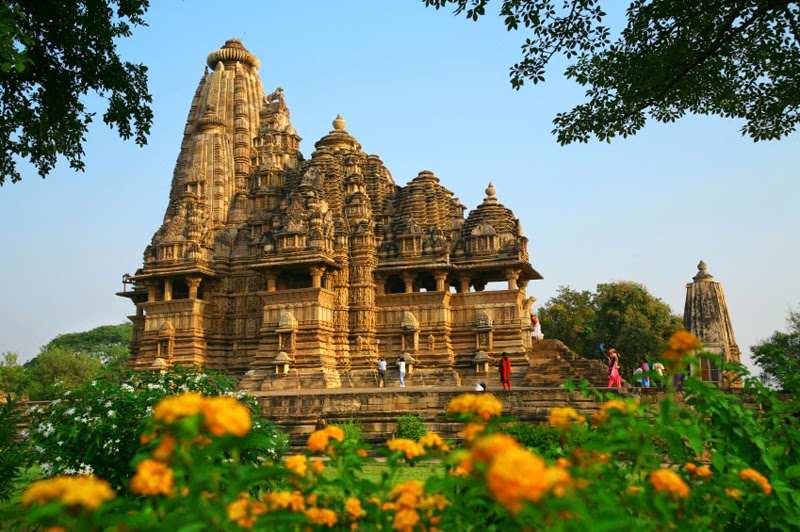 |
| india2_1_0_0_0_0 |
 |
| indija2004-075 |
 |
| Jain Erotica |
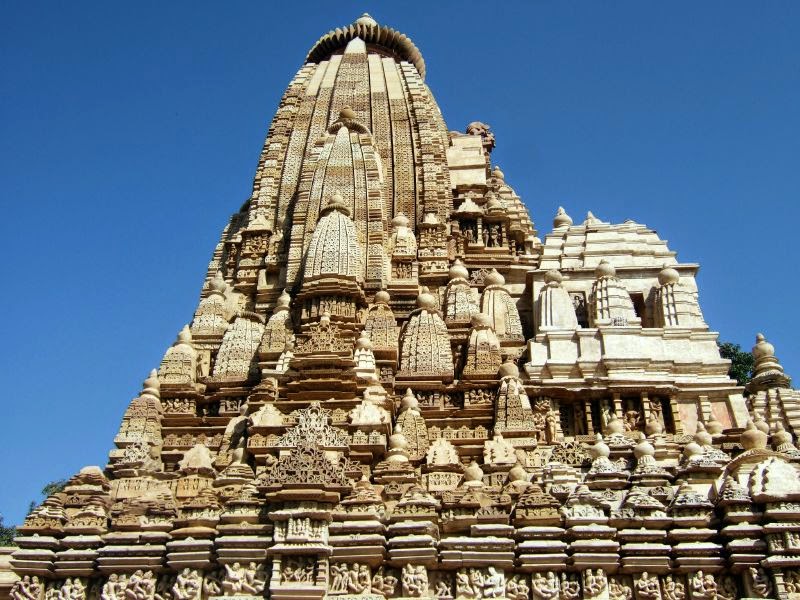 |
| Jain temple, Khajuraho, India |
 |
| Kamasutra Sculpture |
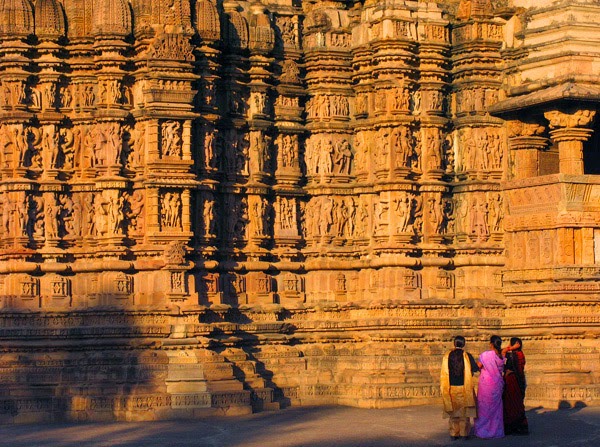 |
| kamasutra_lessons |
 |
| Kandariya Mahadev Temple |
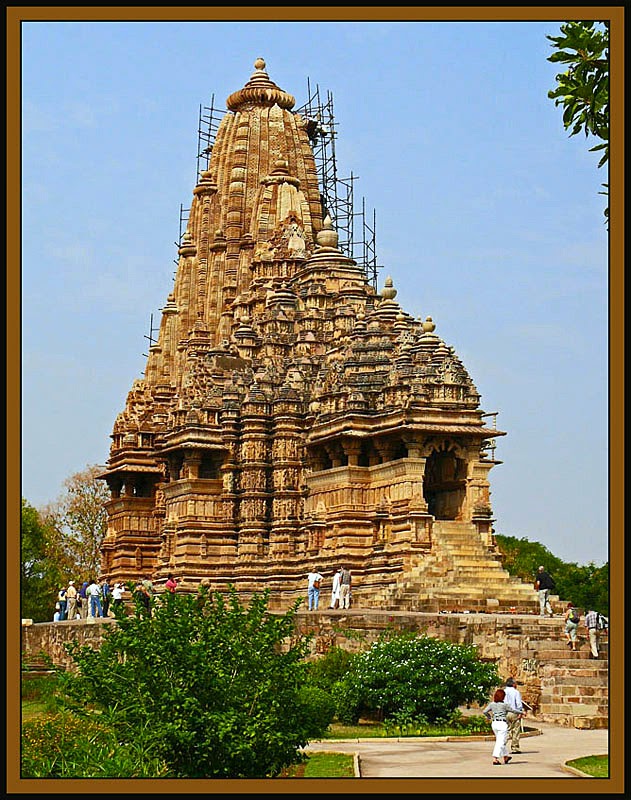 |
| Kandariya-Mahadeva Temple I |
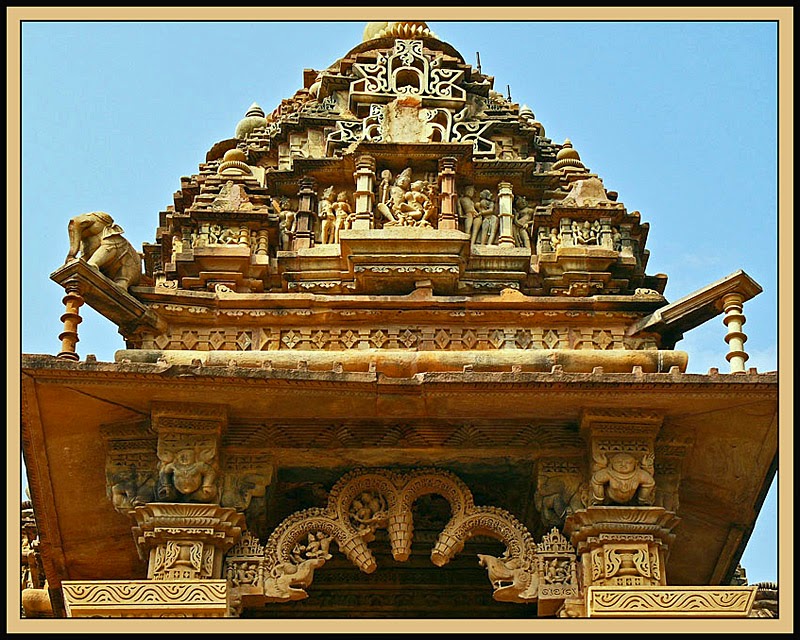 |
| Kandariya-Mahadeva Temple II b |
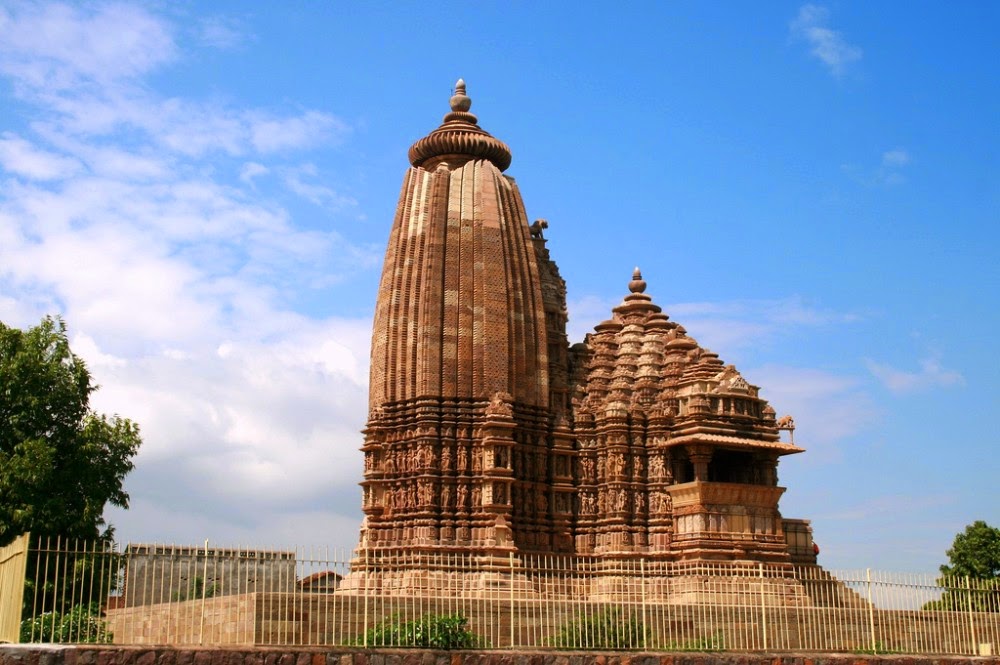 |
| Khajuraho - Lone temple |
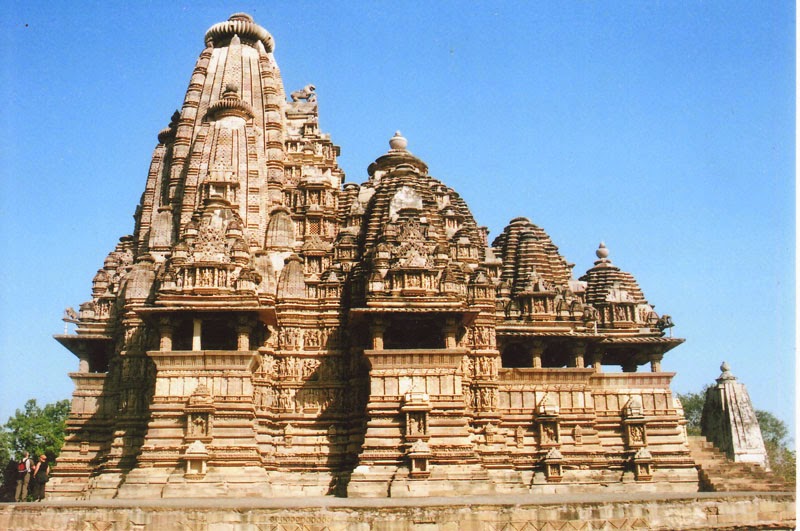 |
| khajuraho - temple |
 |
| Khajuraho - Temples 2 |
 |
| Khajuraho 4 |
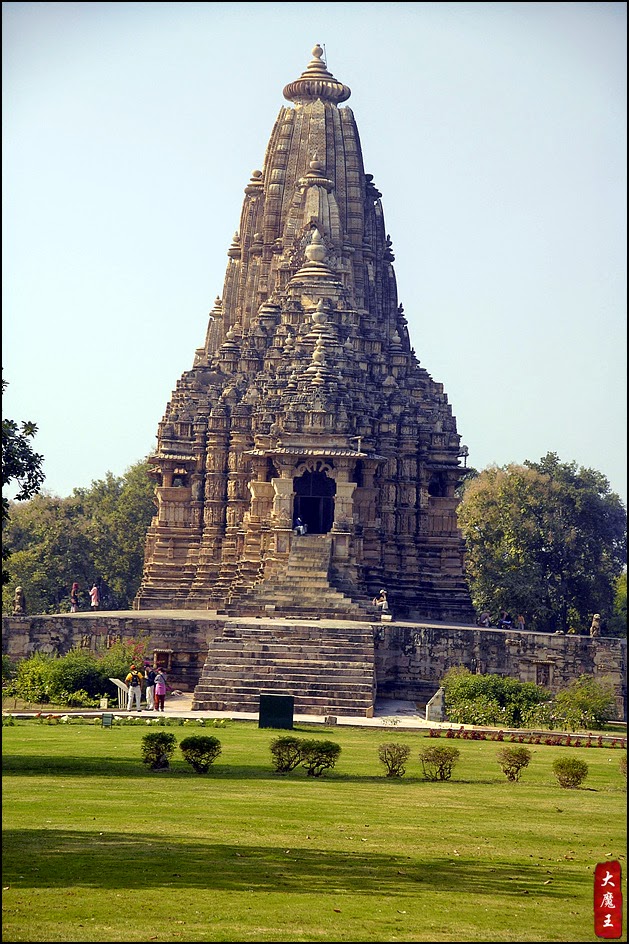 |
| khajuraho 19 |
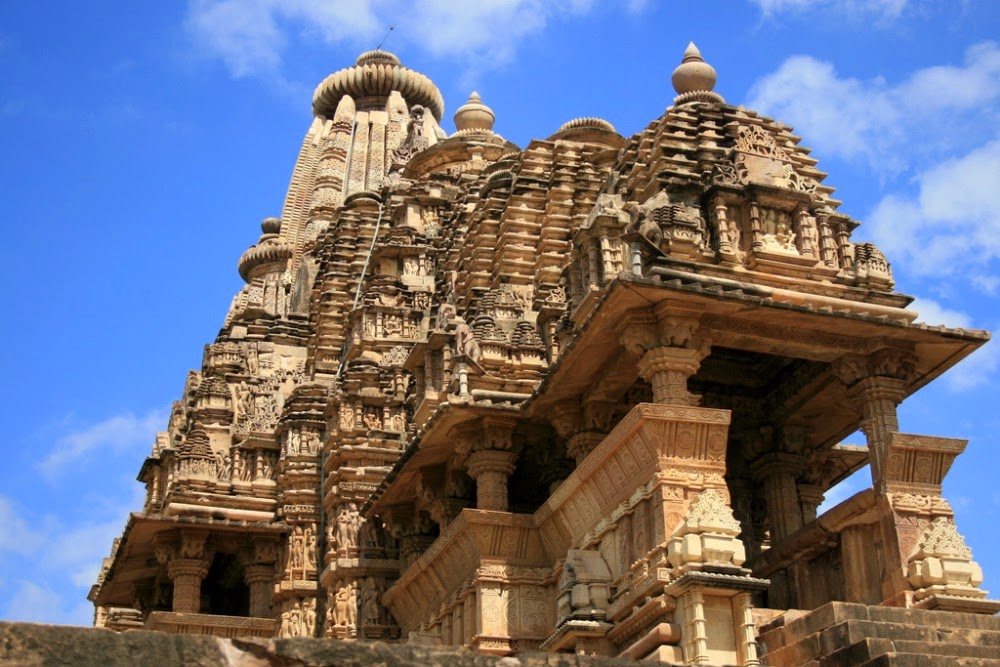 |
| Khajuraho - Temples 3 |
 |
| Khajuraho Temple detail 11 |
 |
| Khajuraho Temple detail 14 |
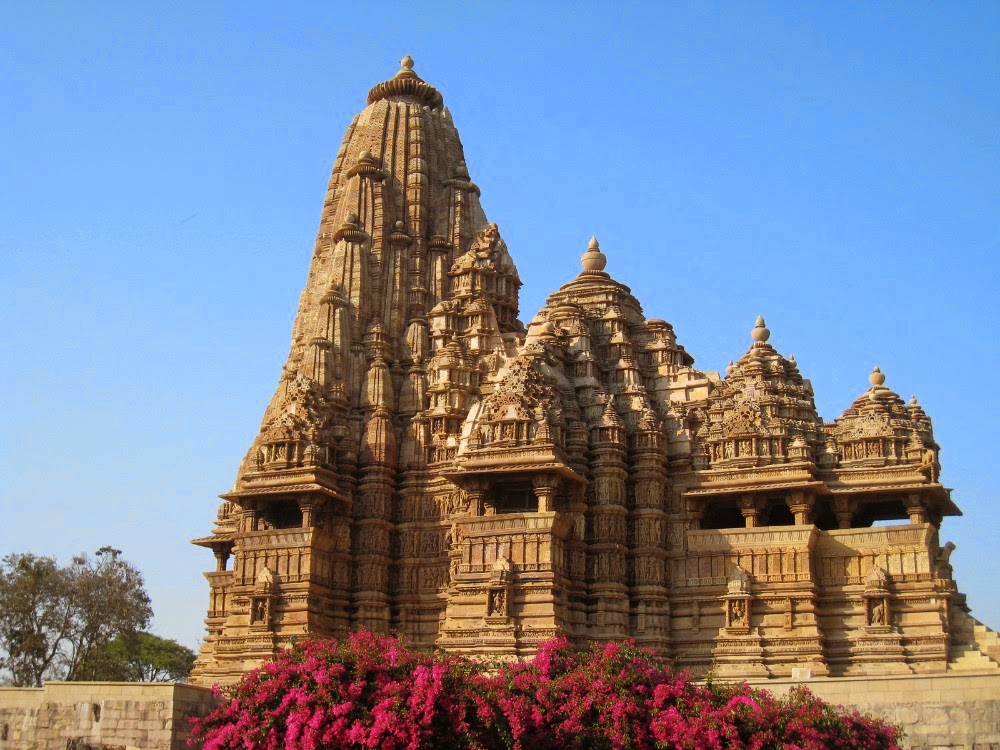 |
| Khajuraho Temple detail 16 |
 |
| Khajuraho temples2 |
 |
| Khajuraho temples at sunset |
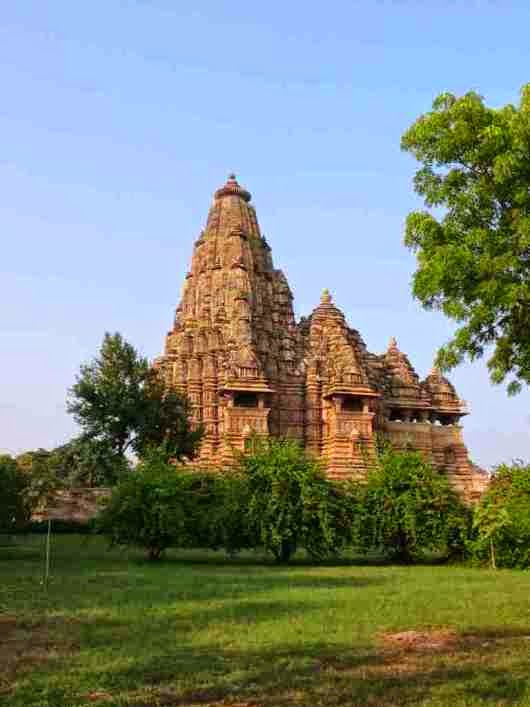 |
| Khajuraho Temples |
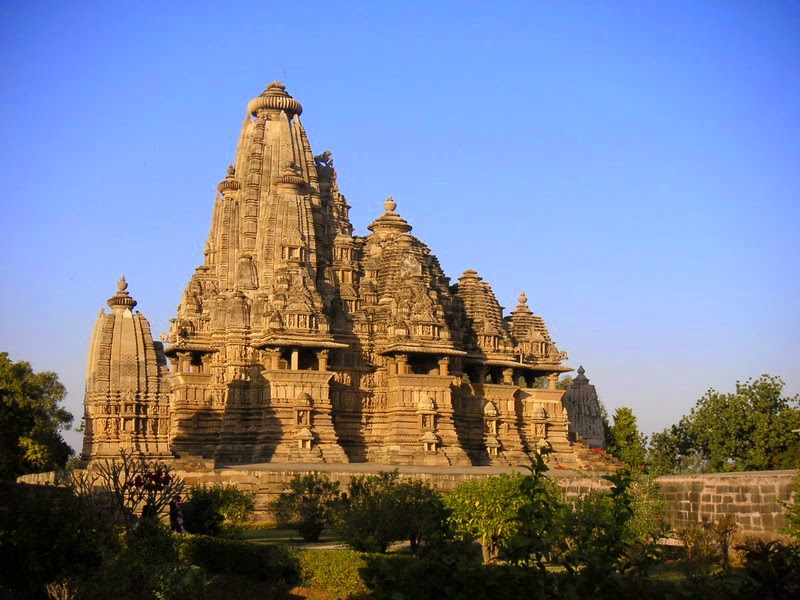 |
| Khajuraho2 |
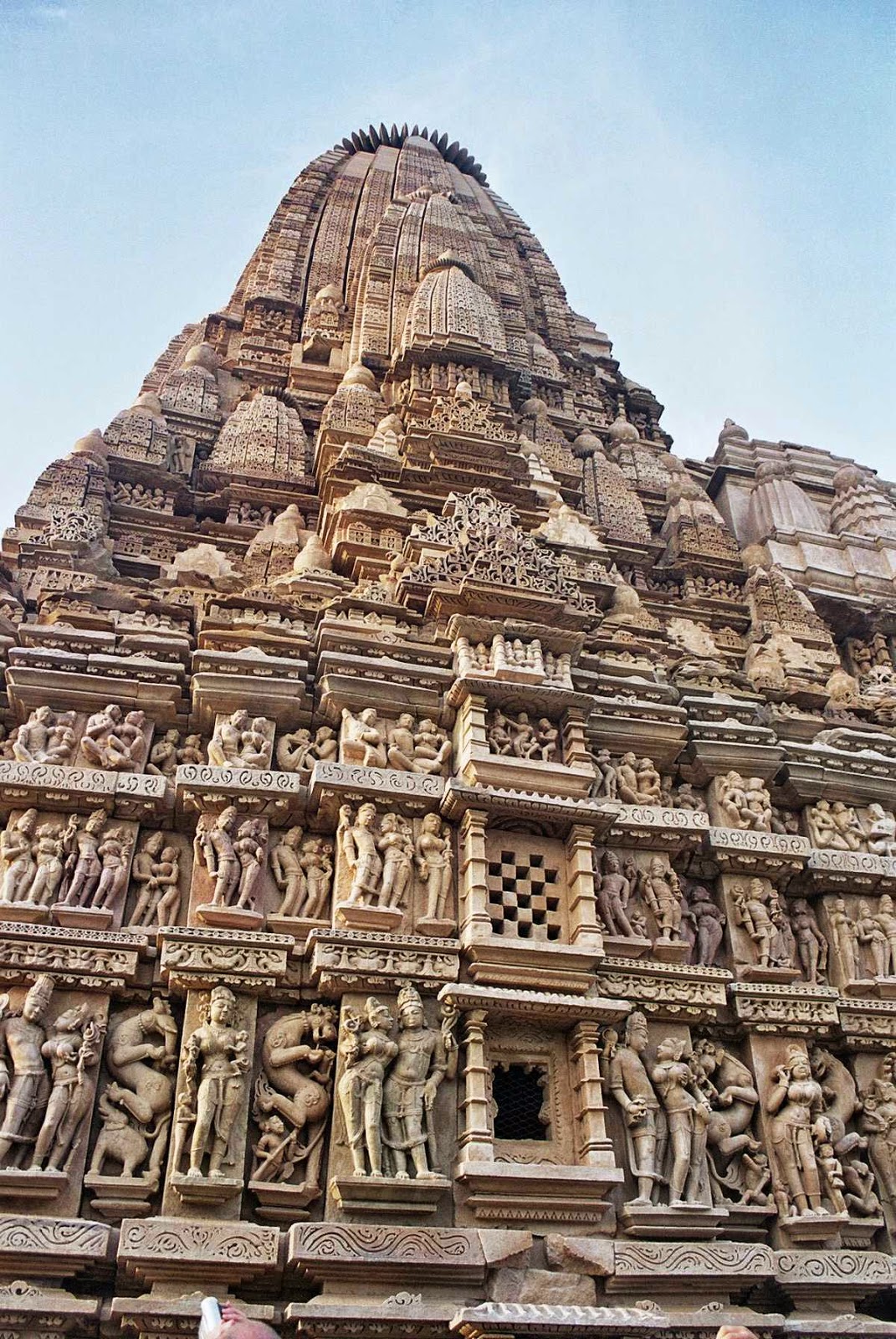 |
| Khajuraho5 |
 |
| Khajuraho Temples3 |
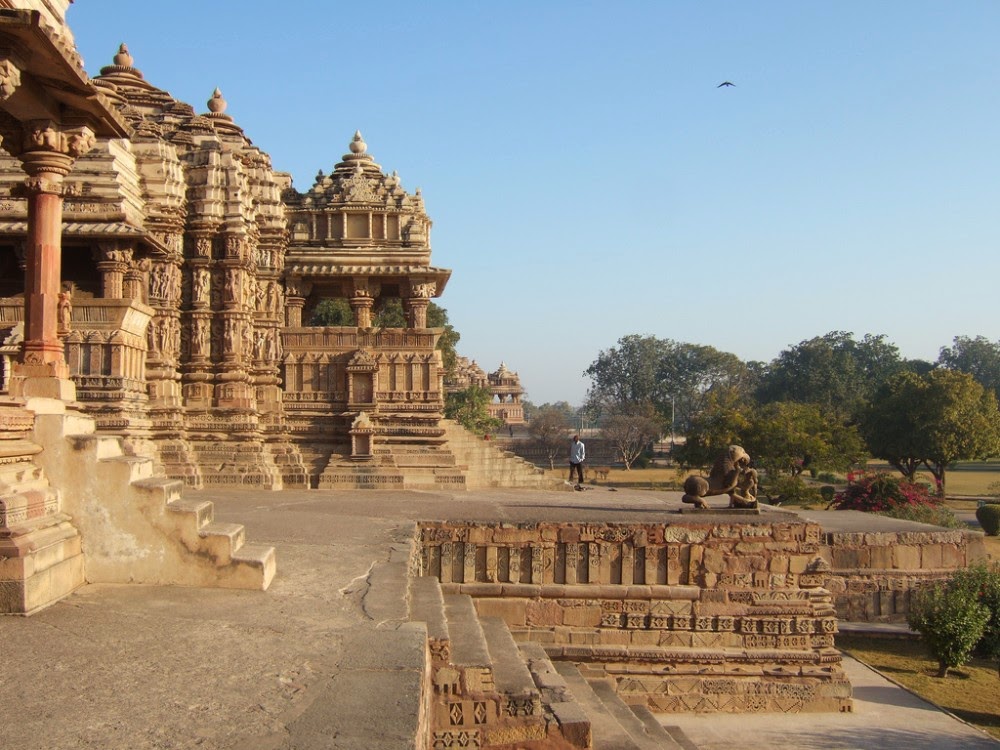 |
| Khajuraho, India |
 |
| Khajuraho. Lake |
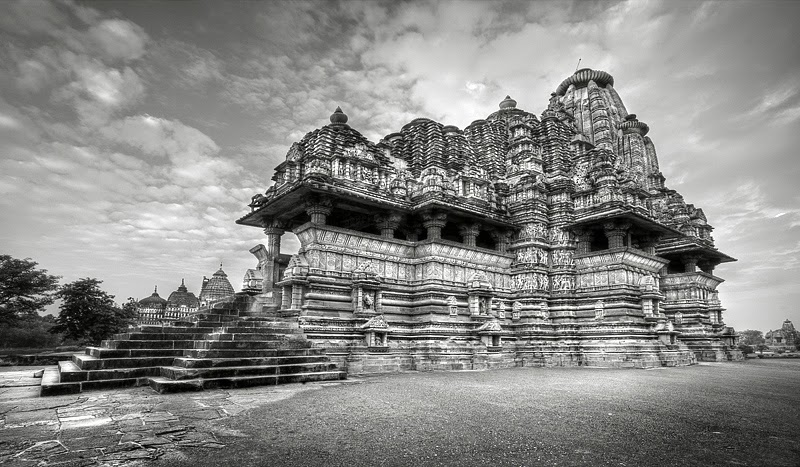 |
| khajuraho |
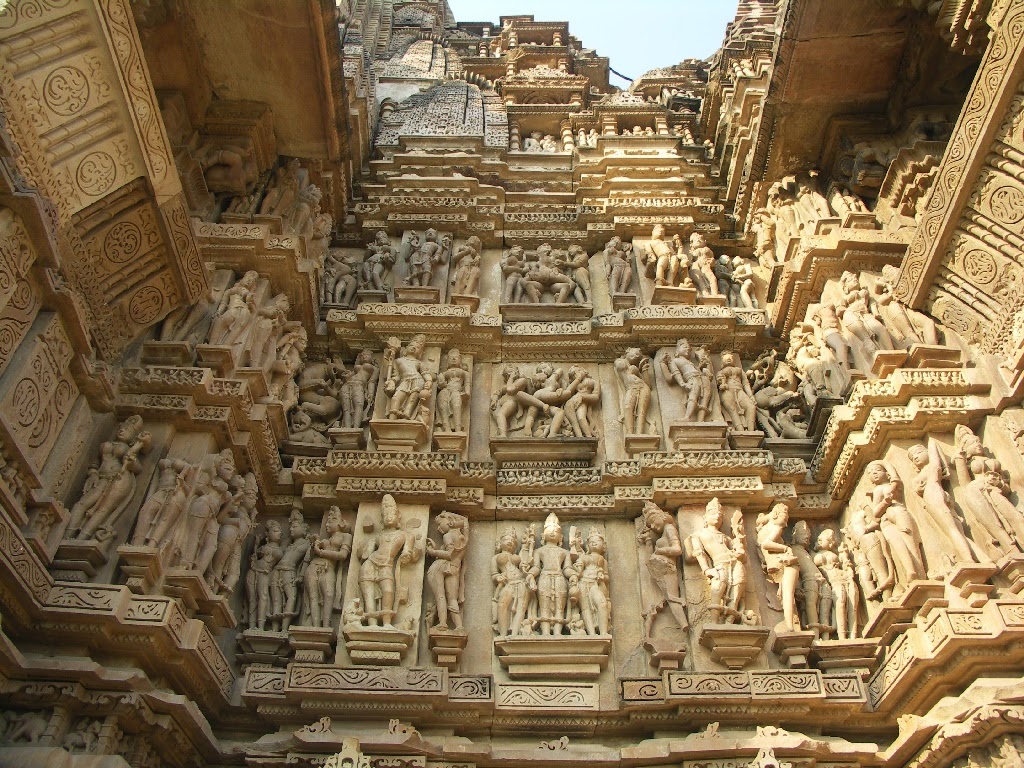 |
| khajuraho_12 |
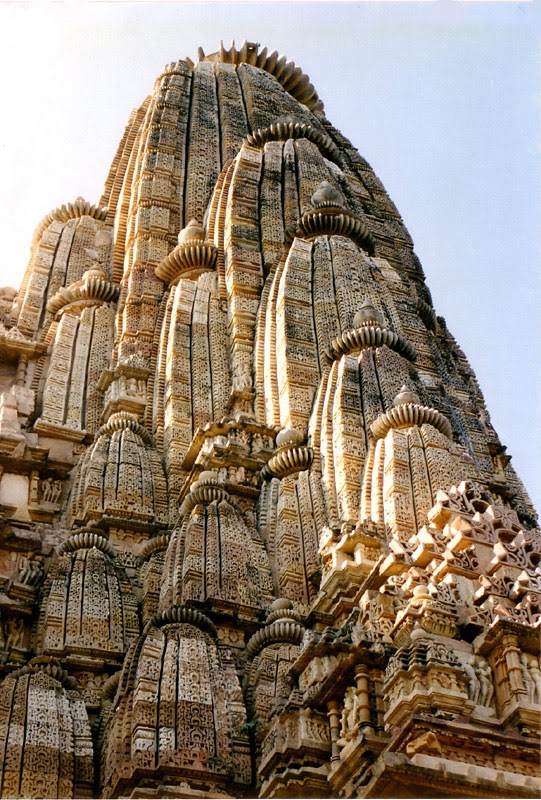 |
| Khajuraho6 |
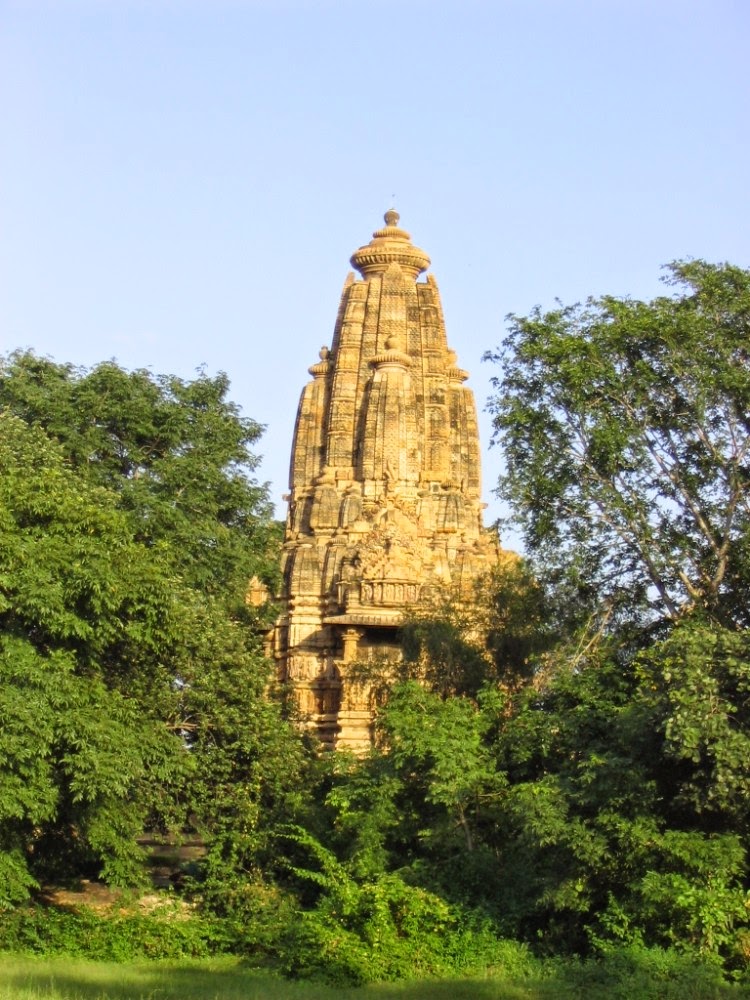 |
| khajuraho7 |
 |
| khajuraho8 |
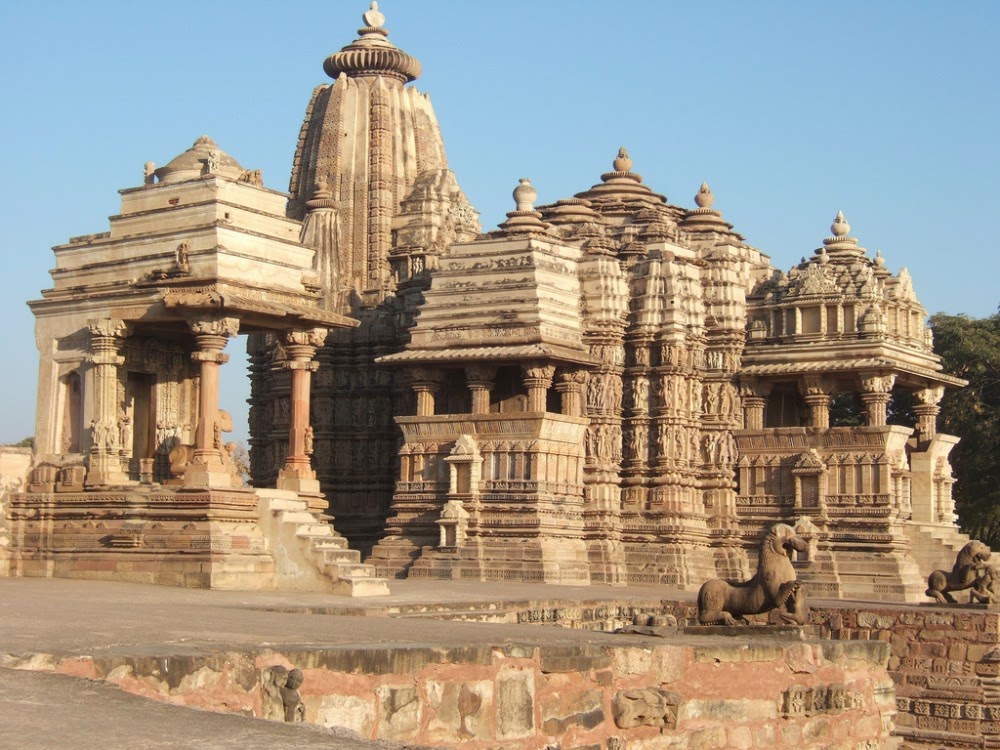 |
| khajuraho9 |
 |
| khajuraho12 |
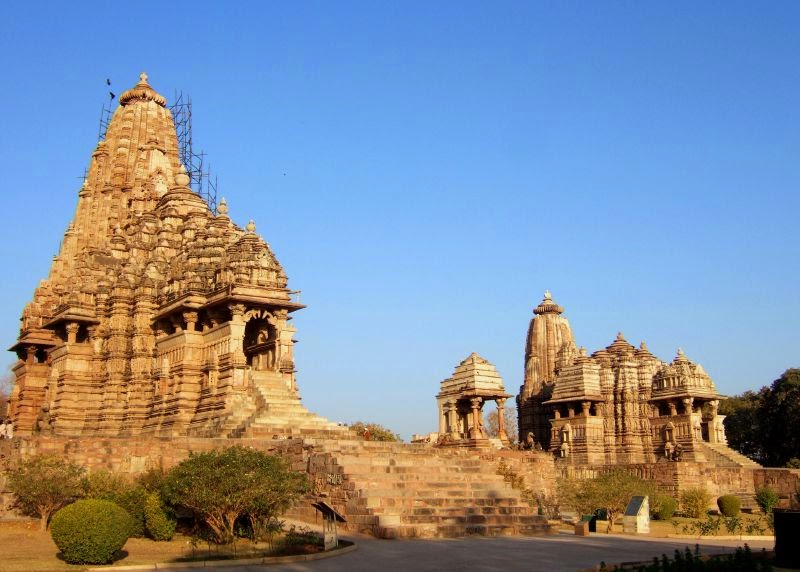 |
| khajuraho15 |
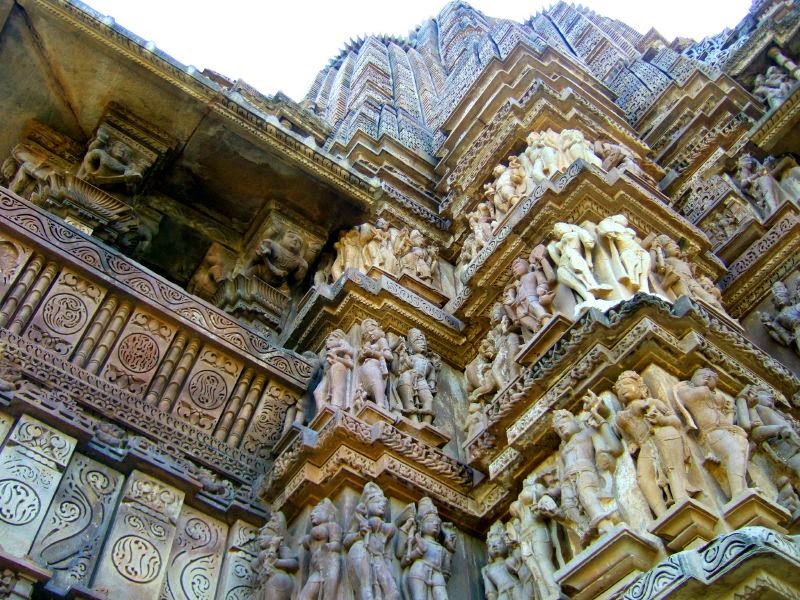 |
| khajuraho16 |
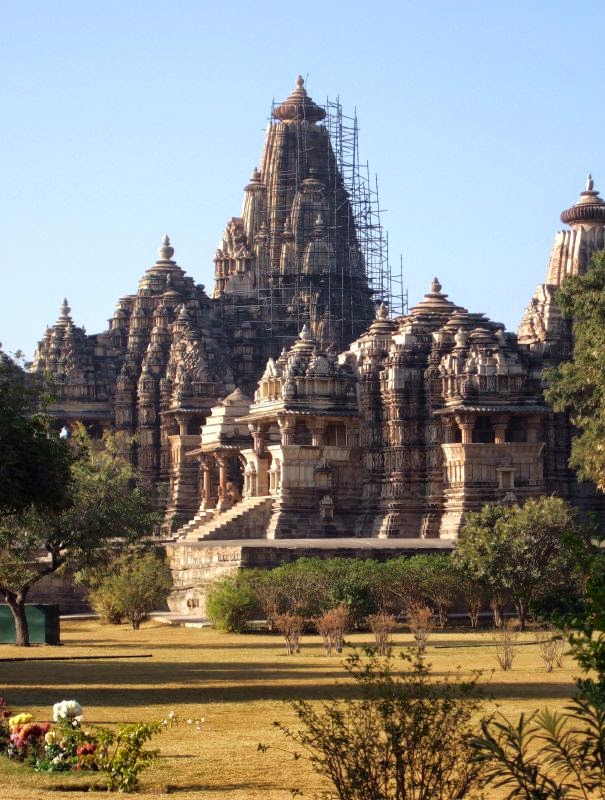 |
| khajuraho17 |
 |
| khajuraho18 |
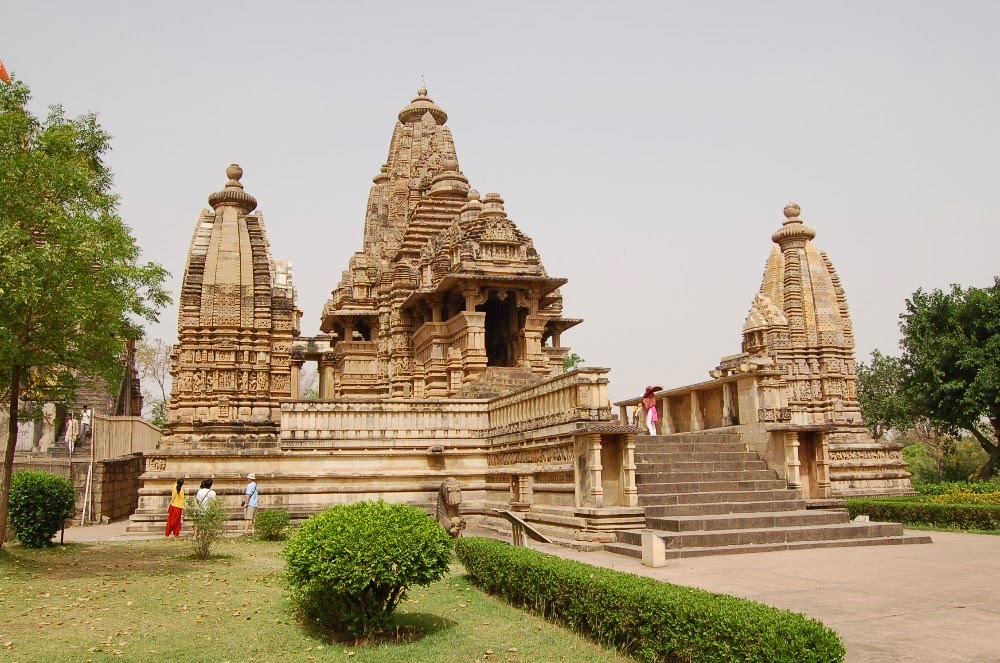 |
| KHAJURAHO-a |
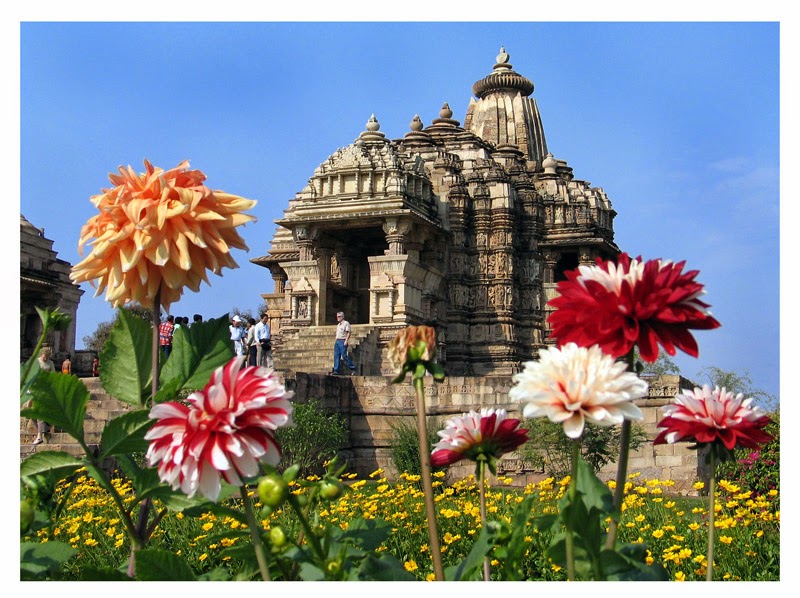 |
| khajuraho-postcard |
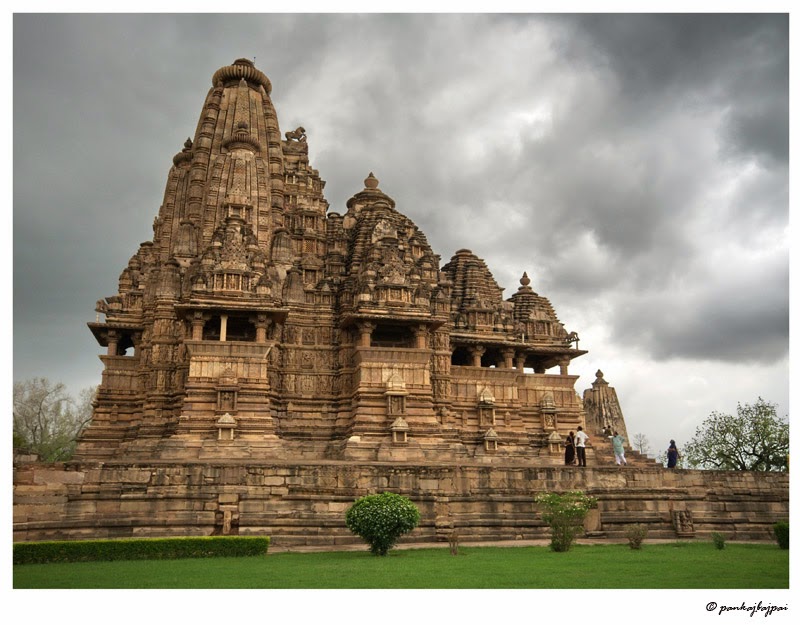 |
| Temples of Khajuraho 1 |
 |
| khajurahodetail |
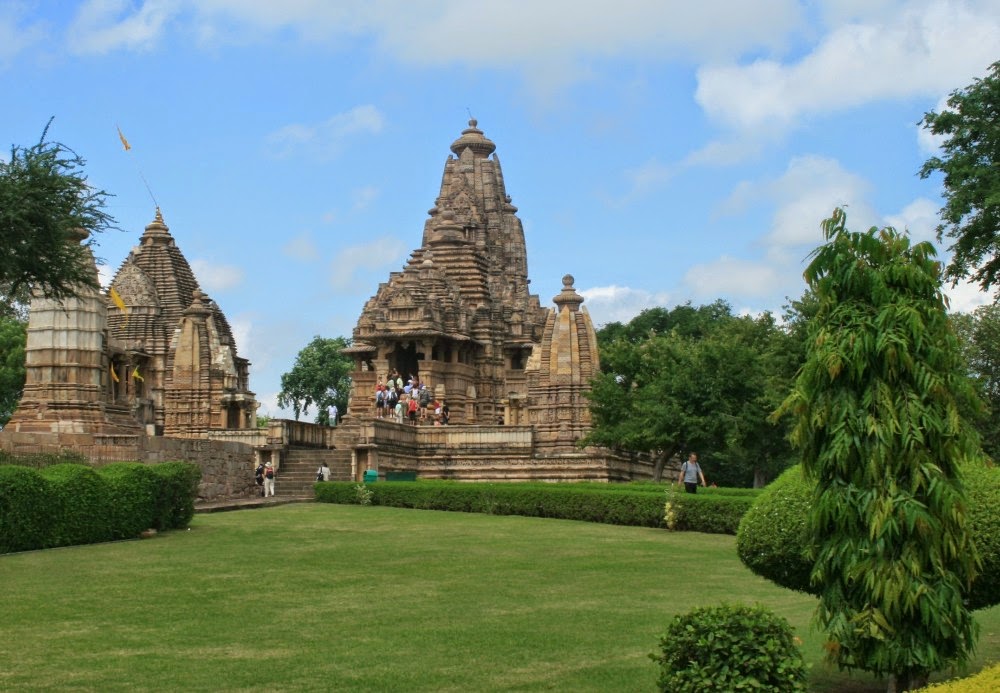 |
| khajurajo-temple |
 |
| Khajurajo-temples4 |
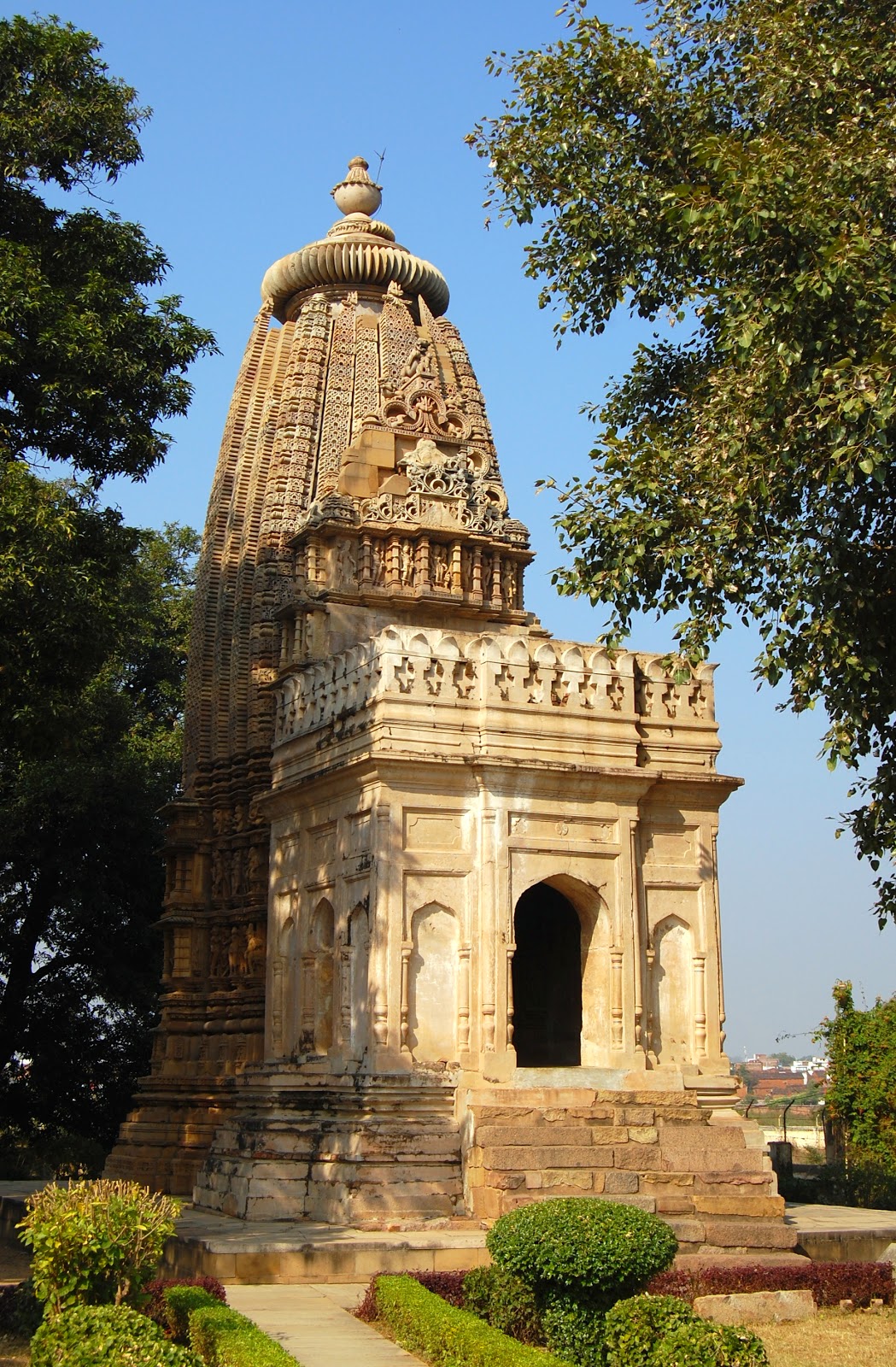 |
| Krajuraho_Adinath_temple_2010 |
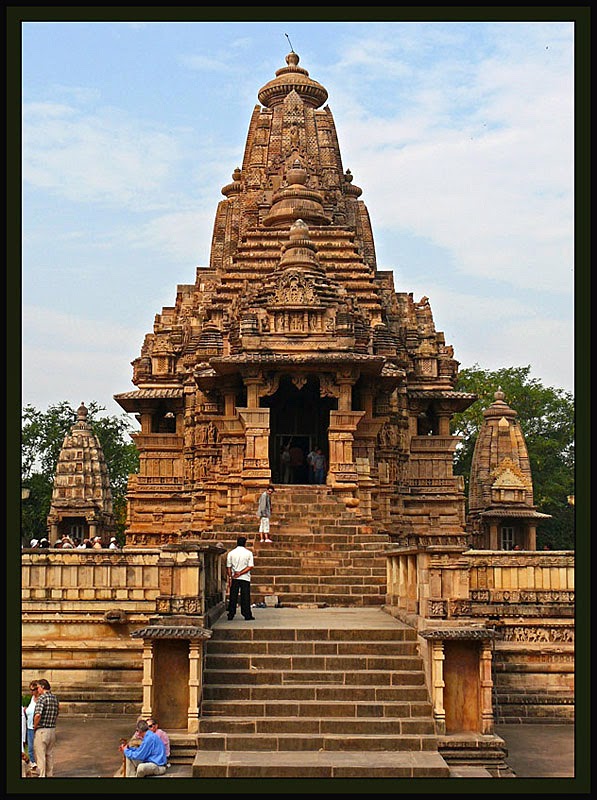 |
| Lakshmana Temple I |
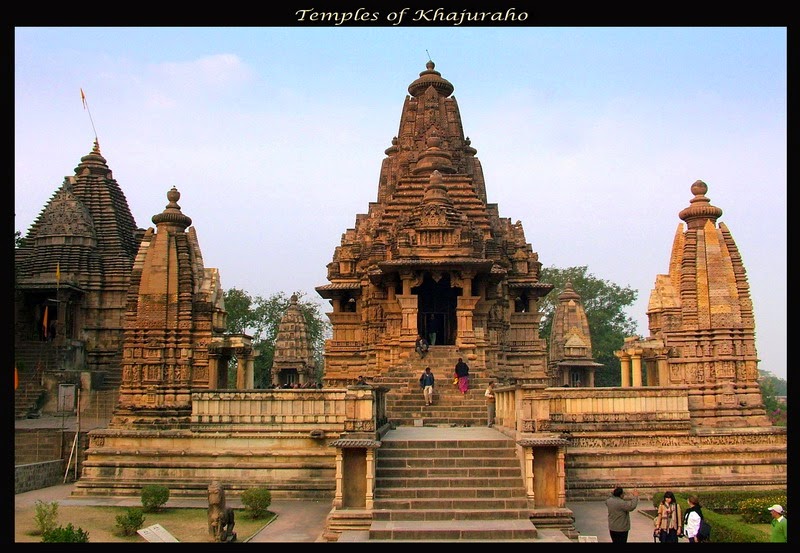 |
| laxman Temple Khajuraho |
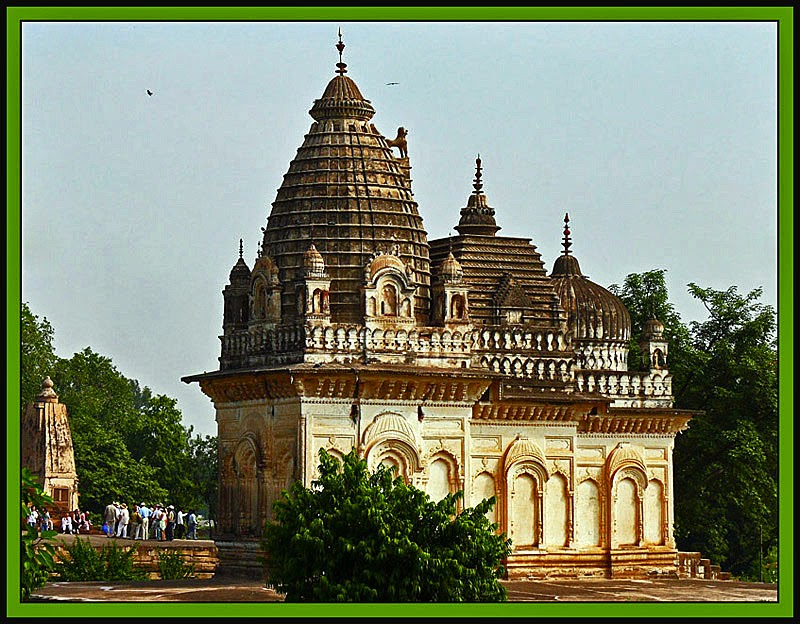 |
| Modern Temple |
 |
| Morning warmth |
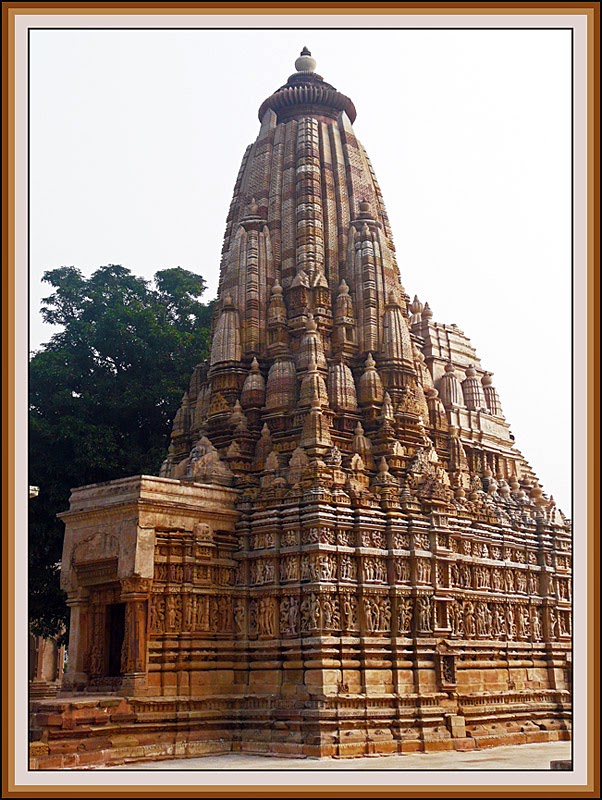 |
| Parsvanatha Temple |
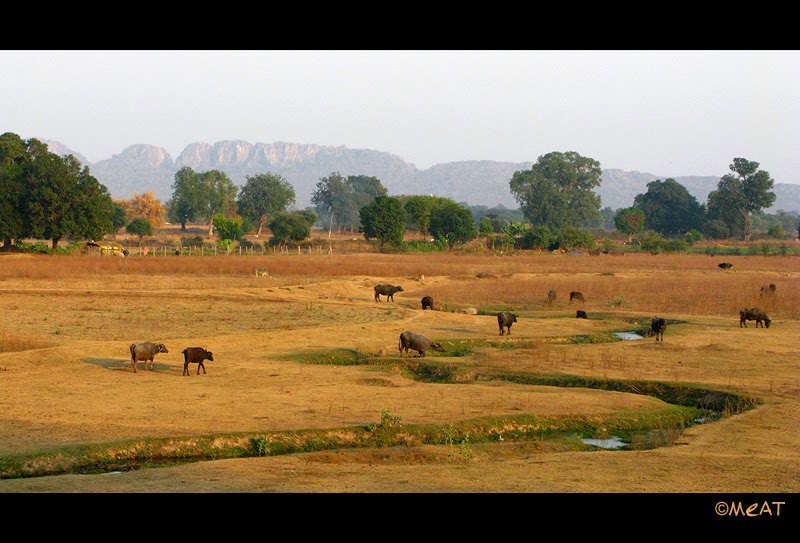 |
| Plains in Khajuraho |
 |
| Poses |
 |
| Reliefs endless |
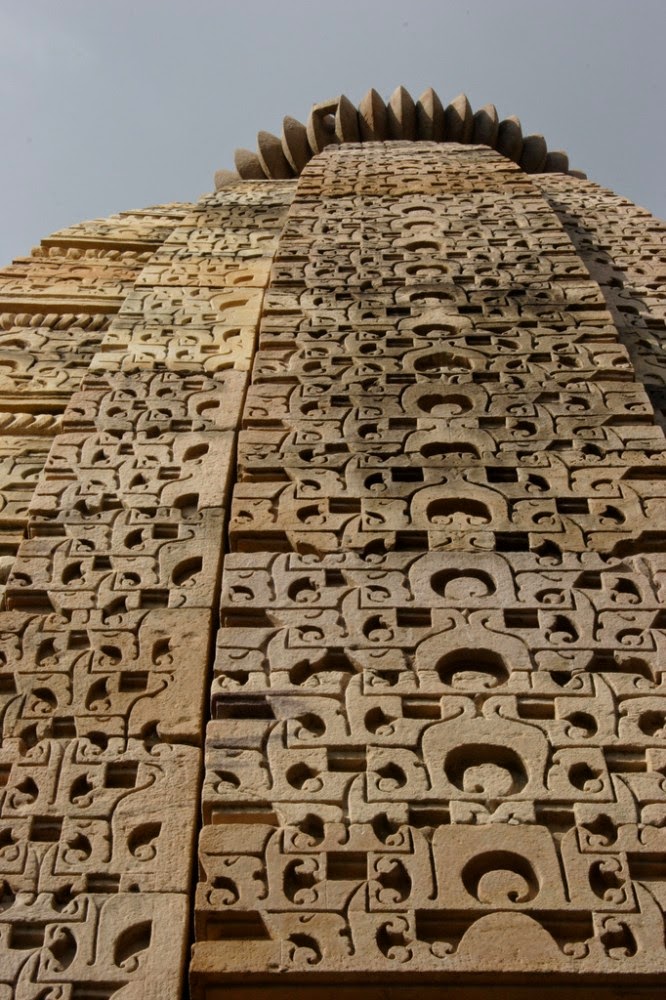 |
| sandstone tower top the Chandela temples in Khajurao |
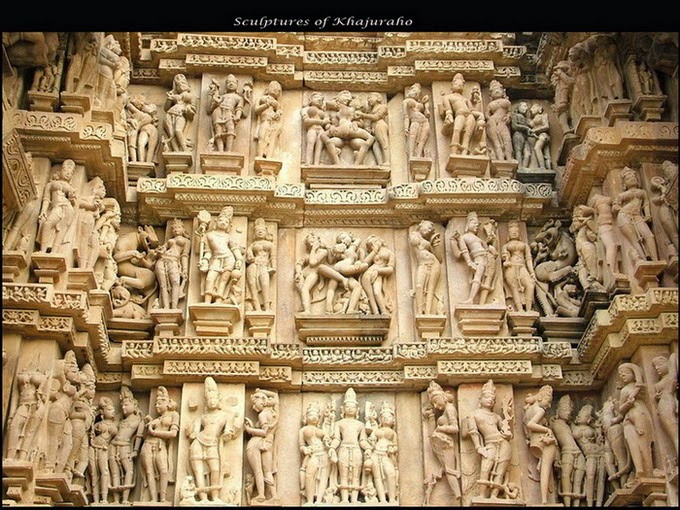 |
| Sculptures of Khajuraho |
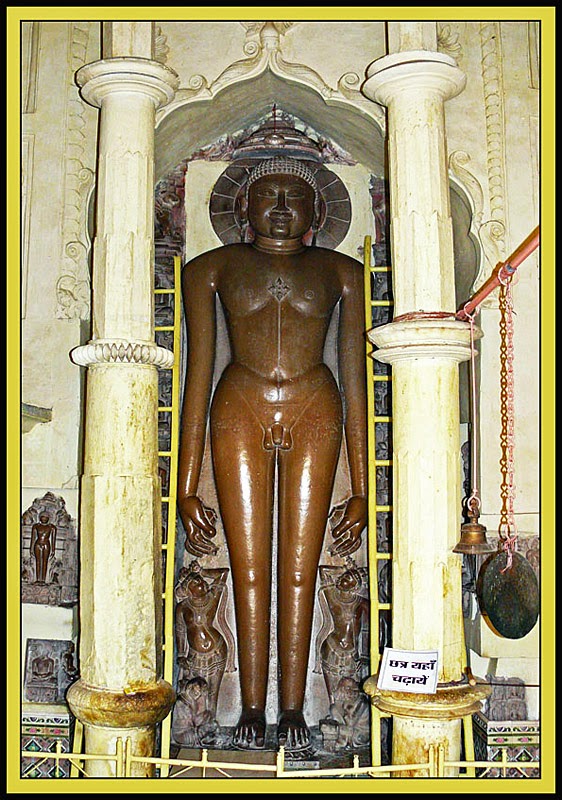 |
| Shantinath Temple |
 |
| Temple at Khajuraho |
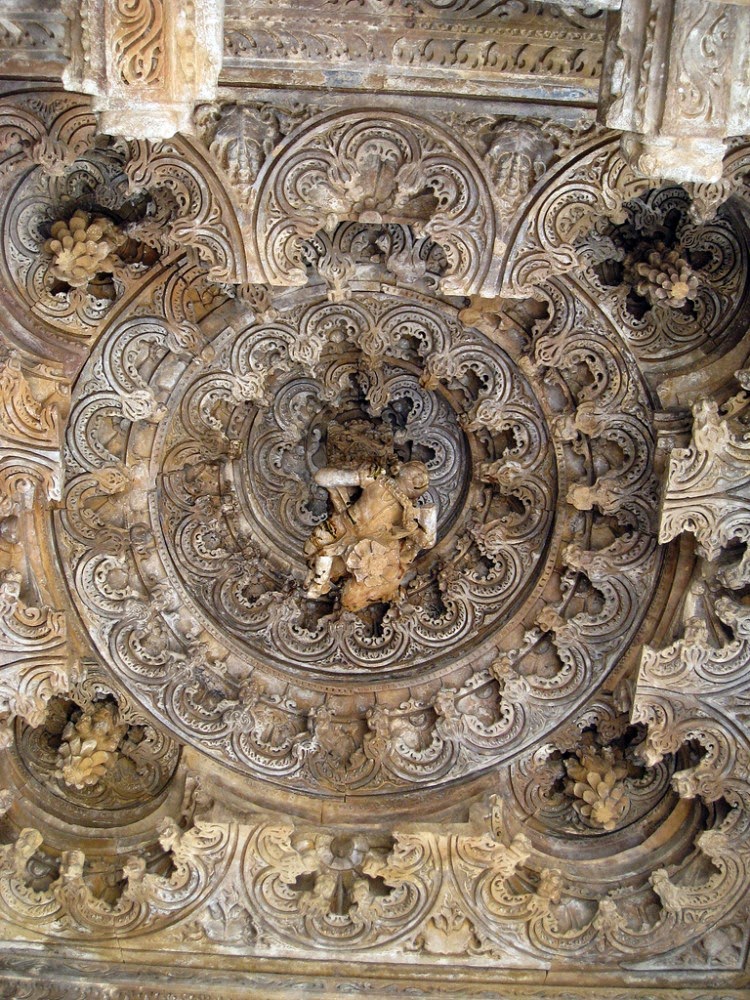 |
| temple ceiling Khajuraho |
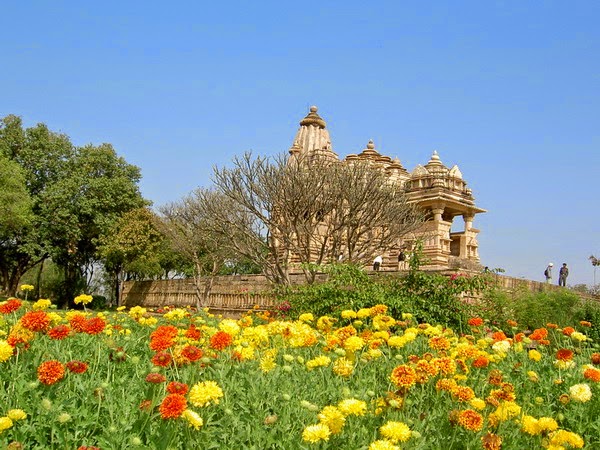 |
| Temple in Kajuraho |
 |
| Temple Sculpture |
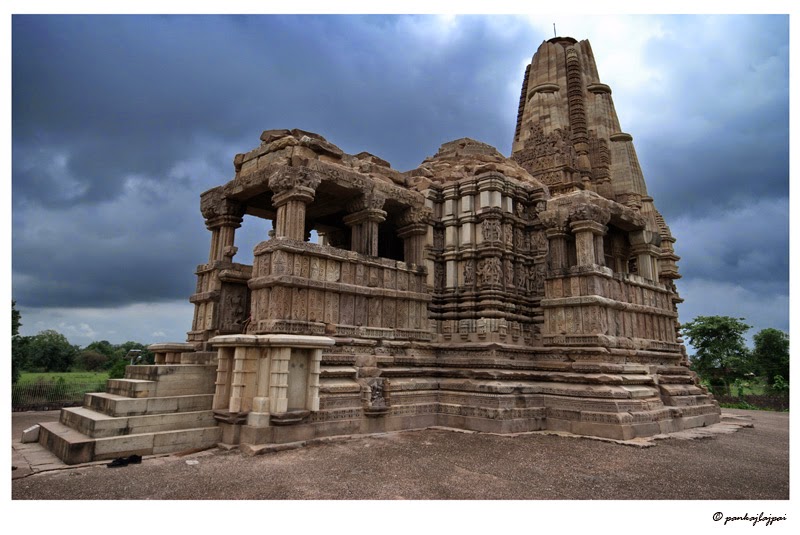 |
| Temples of Khajuraho 1 |
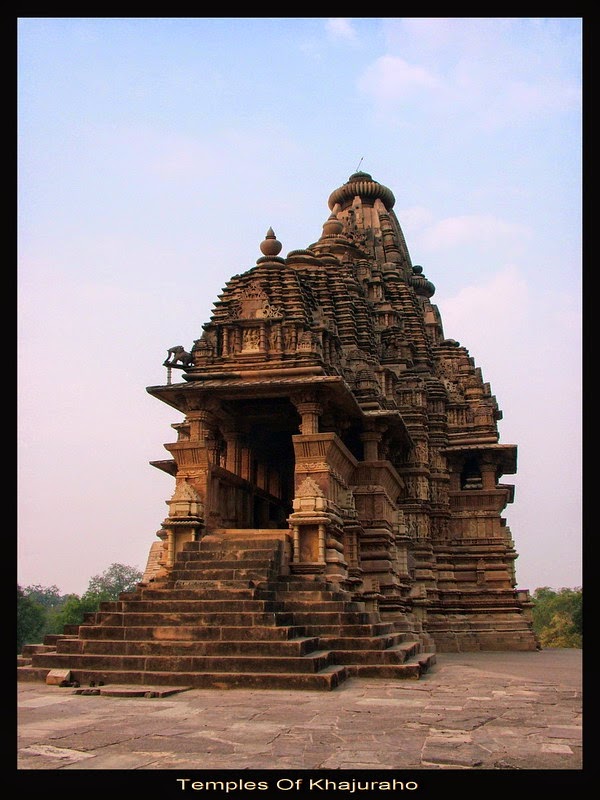 |
| Temples Of Khajuraho3 |
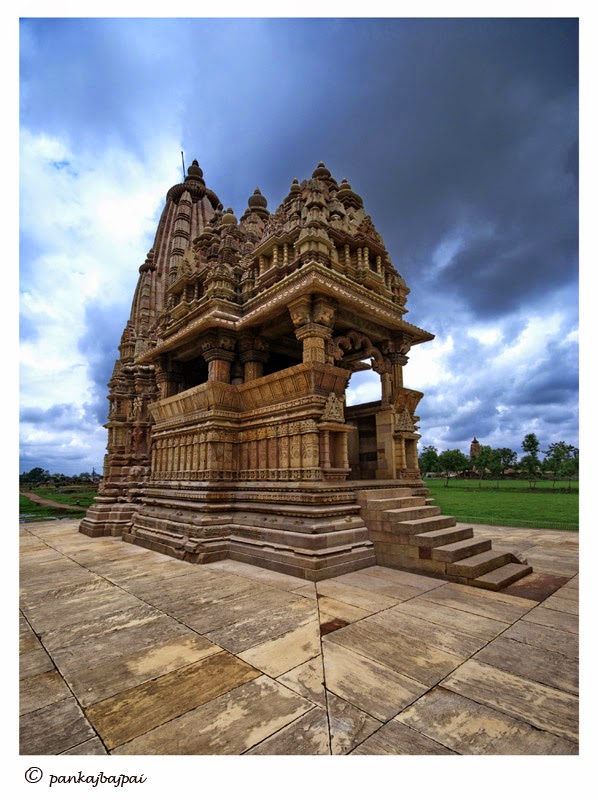.jpg) |
| Temples of Khajuraho (one) |
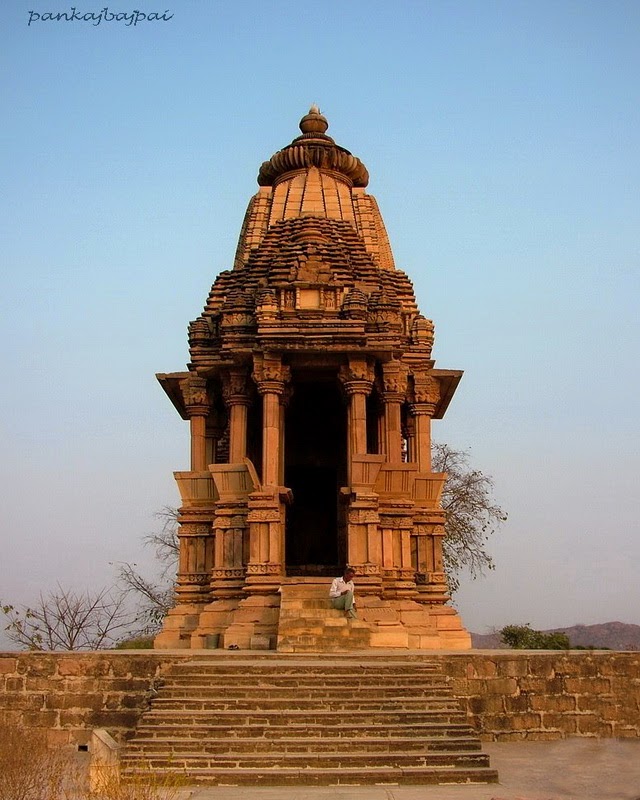.jpg) |
| Temples of Khajuraho (Two) |
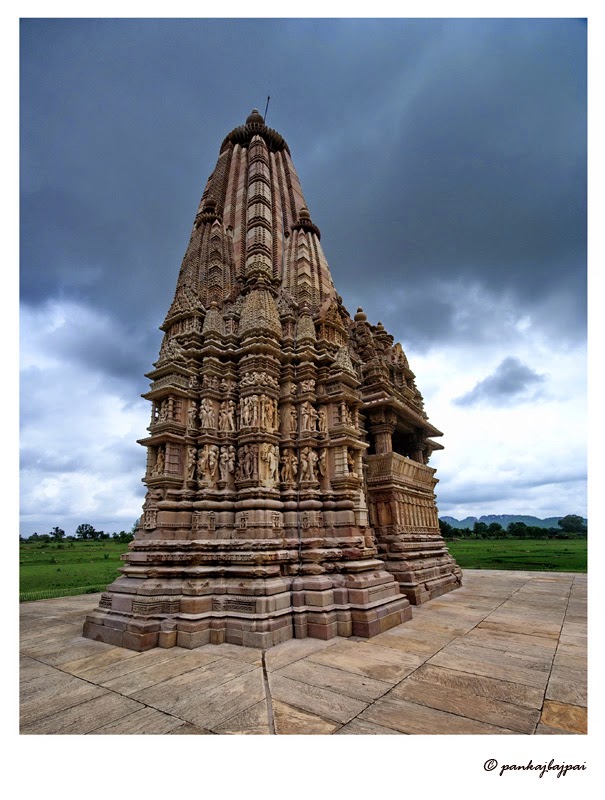 |
| Temples of Khajuraho |
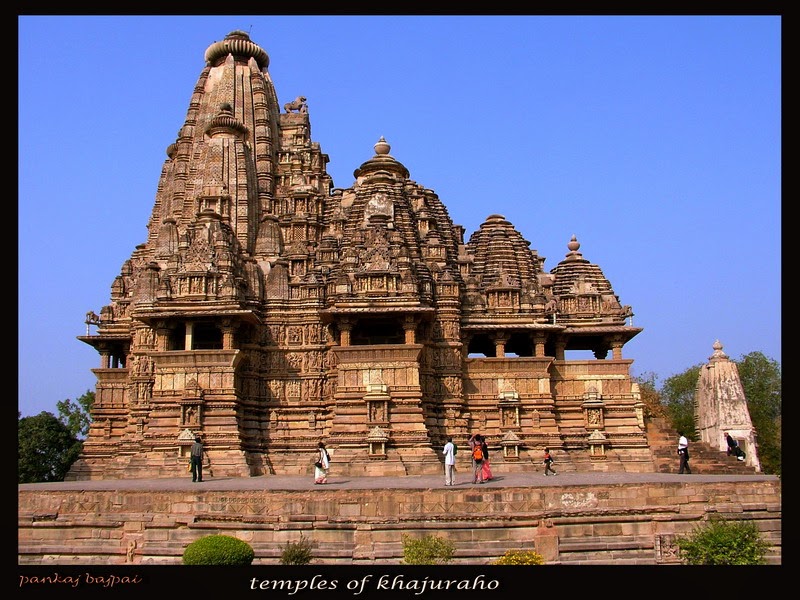.jpg) |
| Temples of love 1 ( Khajuraho) |
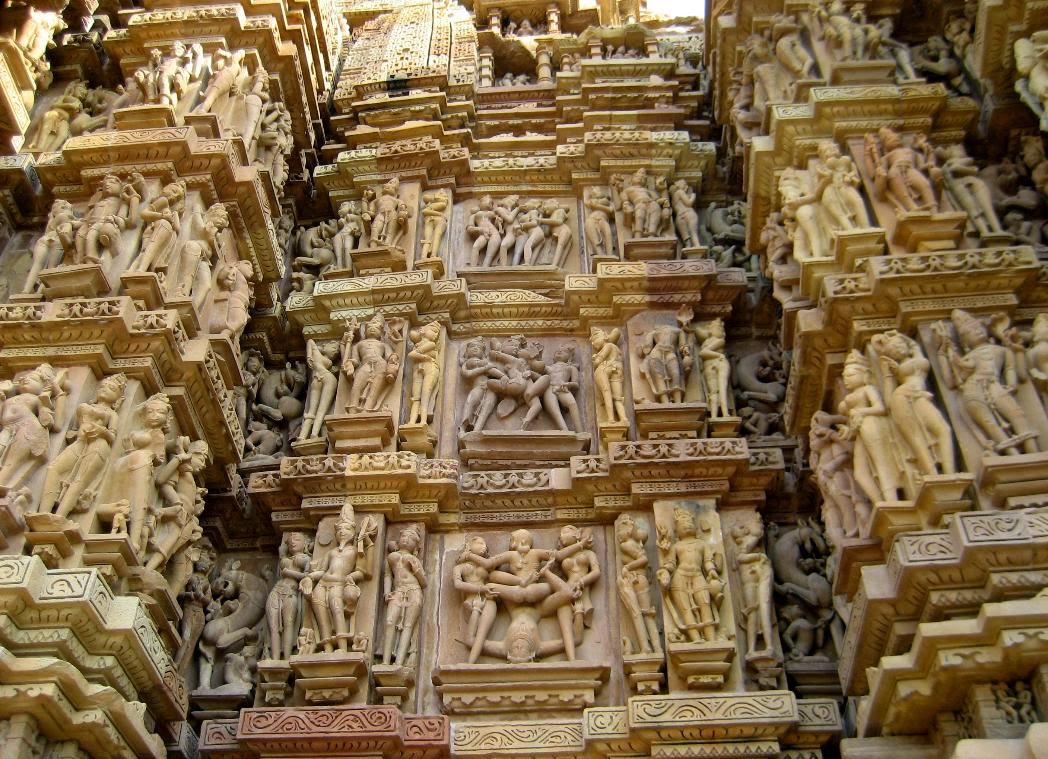 |
| the famous south side of the Kandariya-Mahadev temple demonstrates the sheer volume of intricate stone sculpture present on each temple |
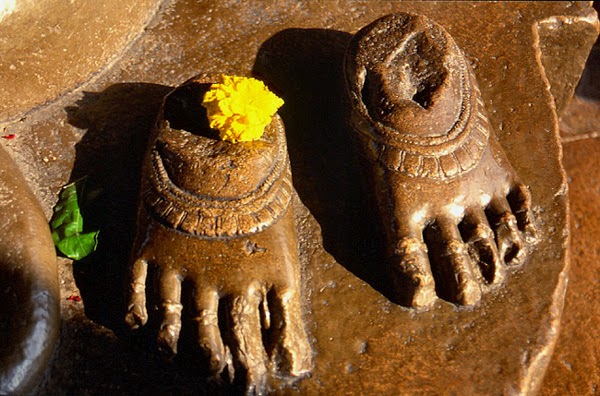 |
| The feet and the flower |
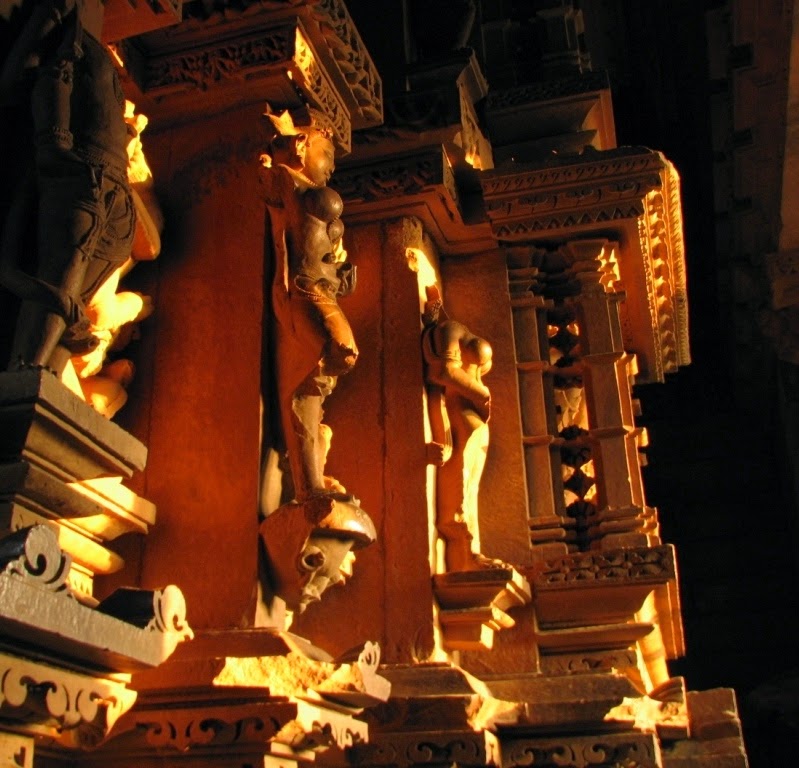 |
| The last ray |
 |
| This is the largest and most famous of the Khajuraho temples, Kandariya-Mahadev. Built around 1025 AD, it represents the high point of Chandelan architecture |
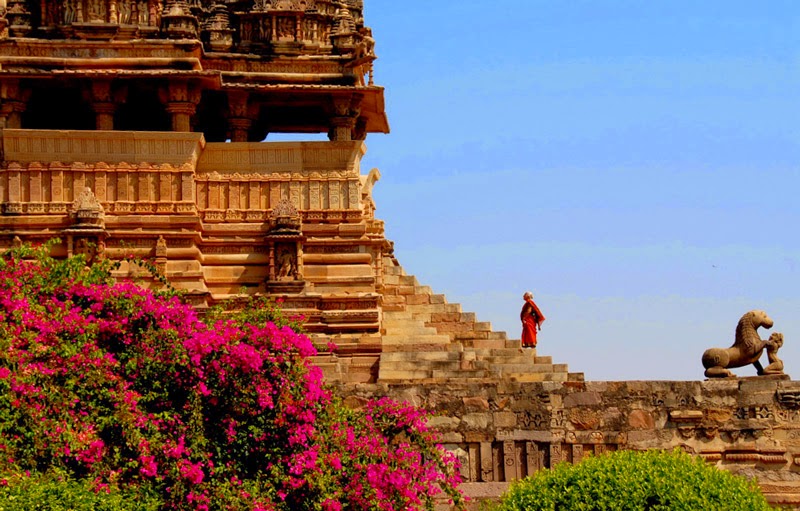 |
| tough climb |
 |
| Uneasy exit. Khajuraho |
 |
| Unrestored dignity |
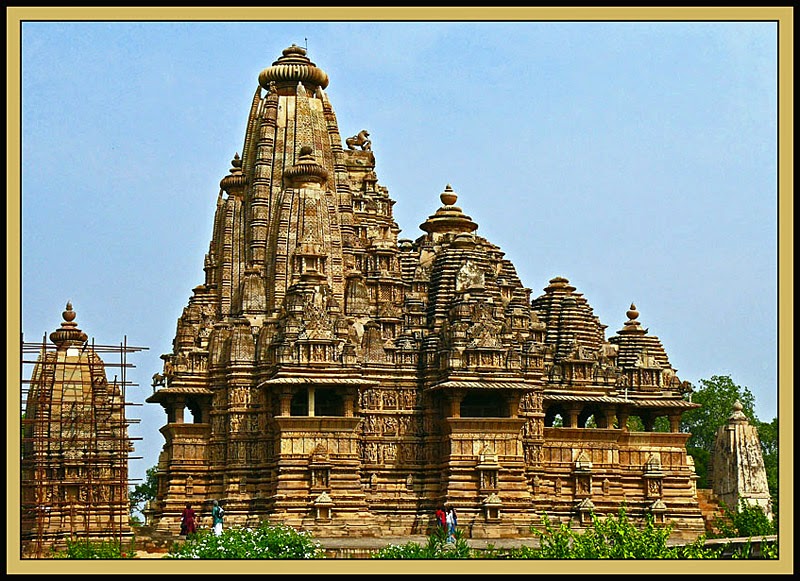 |
| Visvanatha Temple I |
 |
| women-in-red |
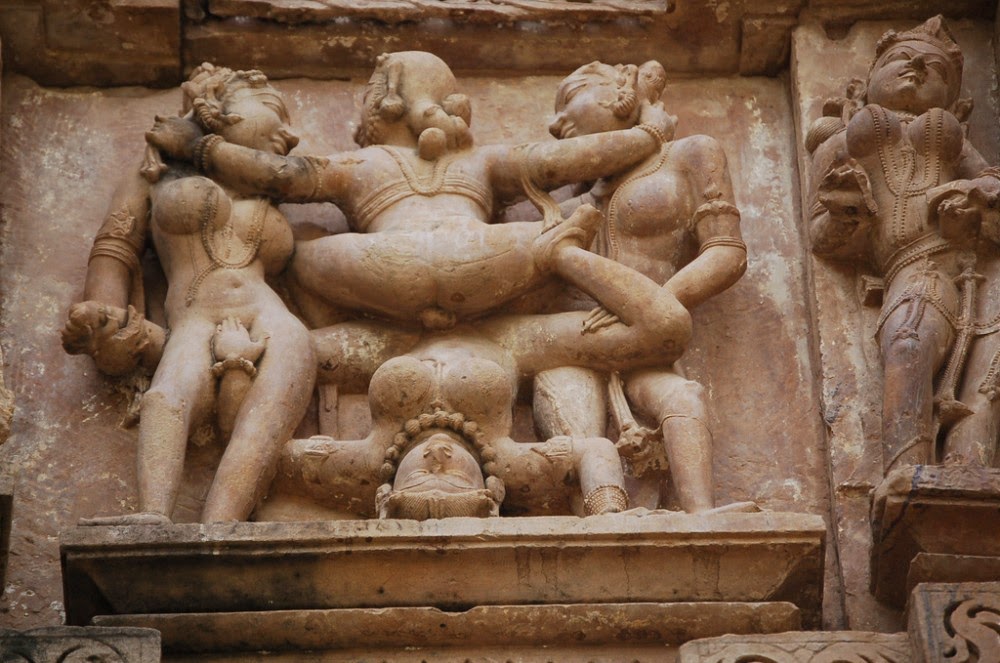 |
| Acrobatic-Art |
 |
| detail-of-vishvanath-temple-1 |
 |
| detail-of-vishvanath-temple-2 |
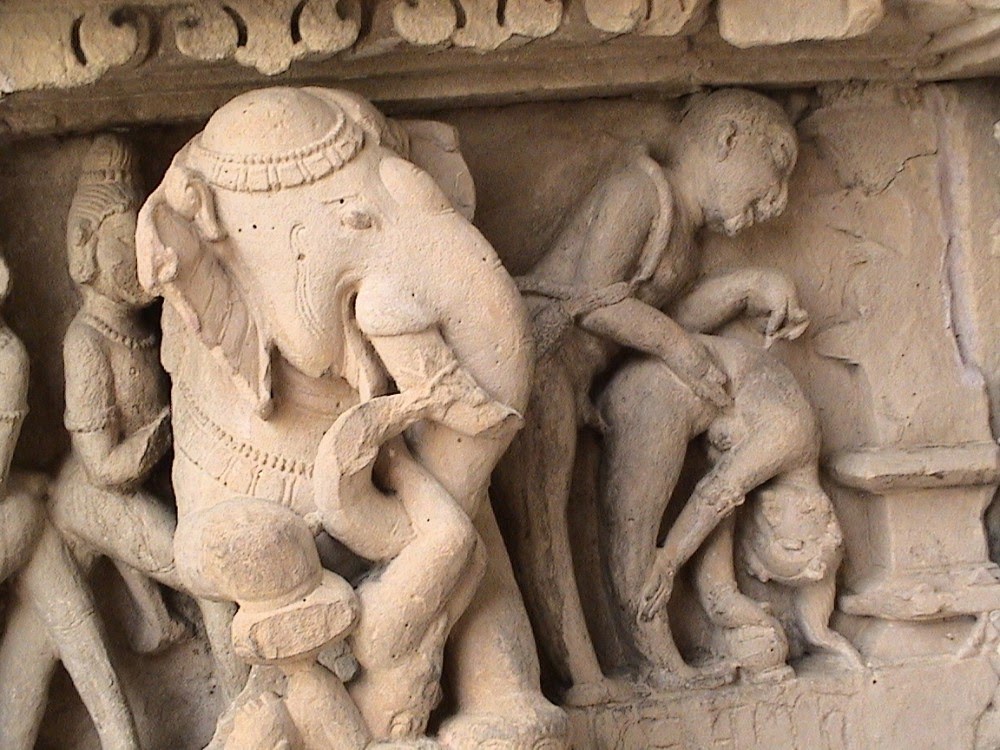 |
| Elephant-seeing-Scene |
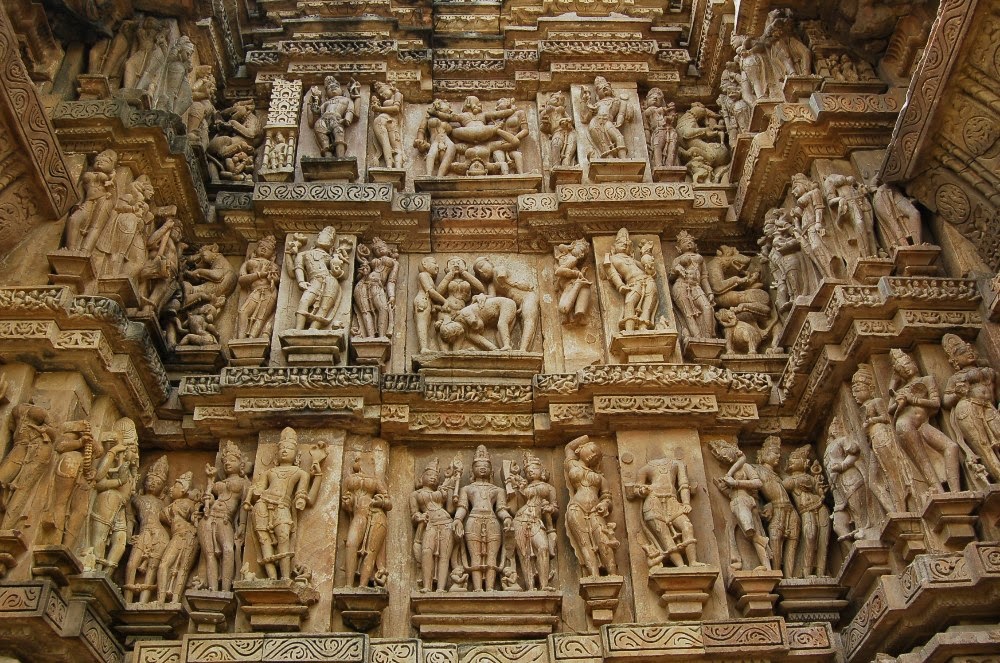 |
| Erotic-temple-art |
 |
| eroticsculpture1 |
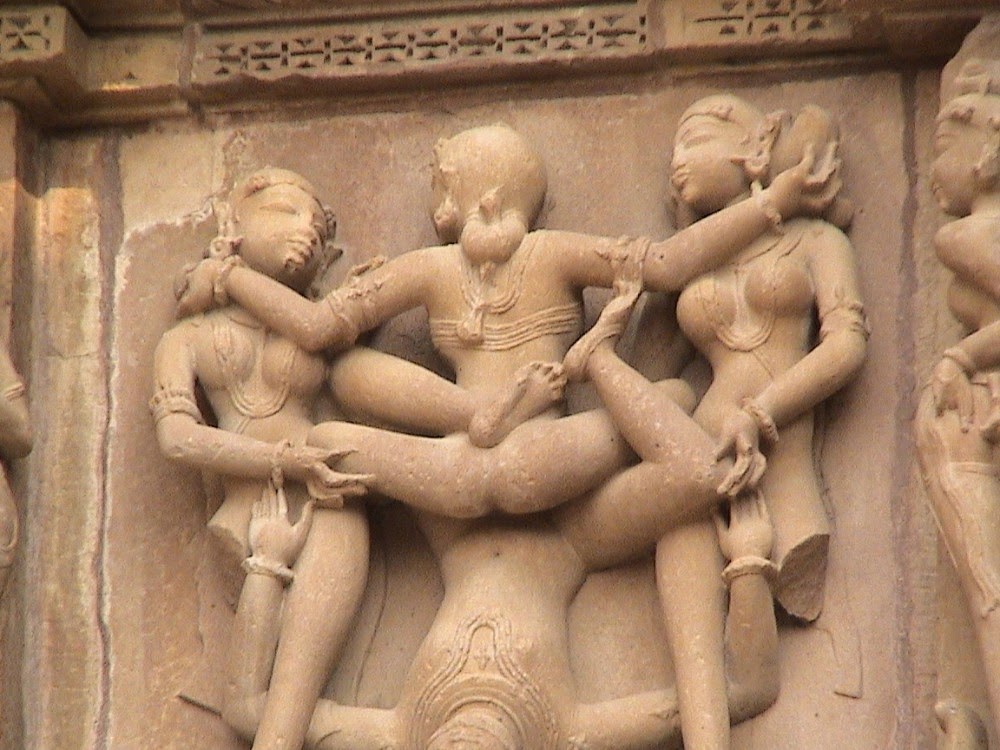 |
| Famous-4-in-1 |
 |
| khajuraho9 |
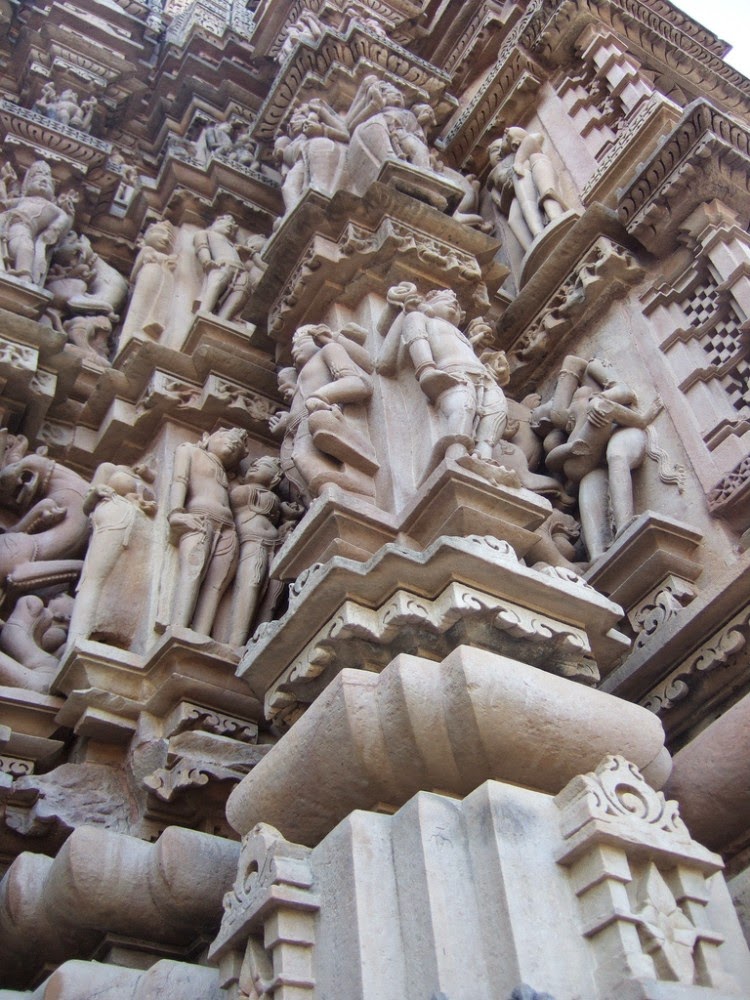 |
| khajuraho11 |
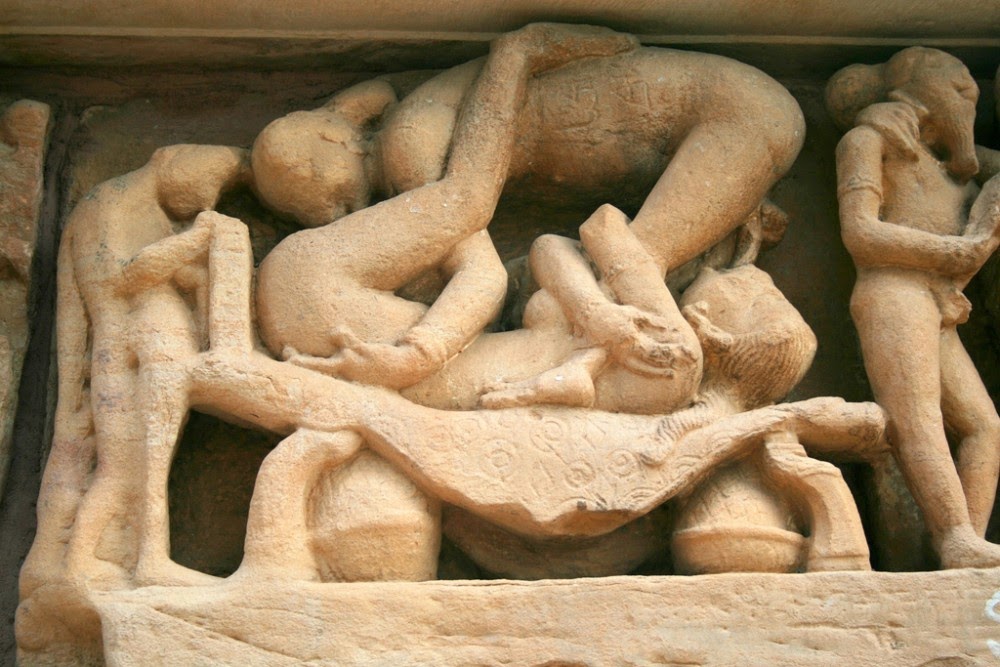 |
| khajuraho69 |
 |
| Khajuraho-Erotic2 |
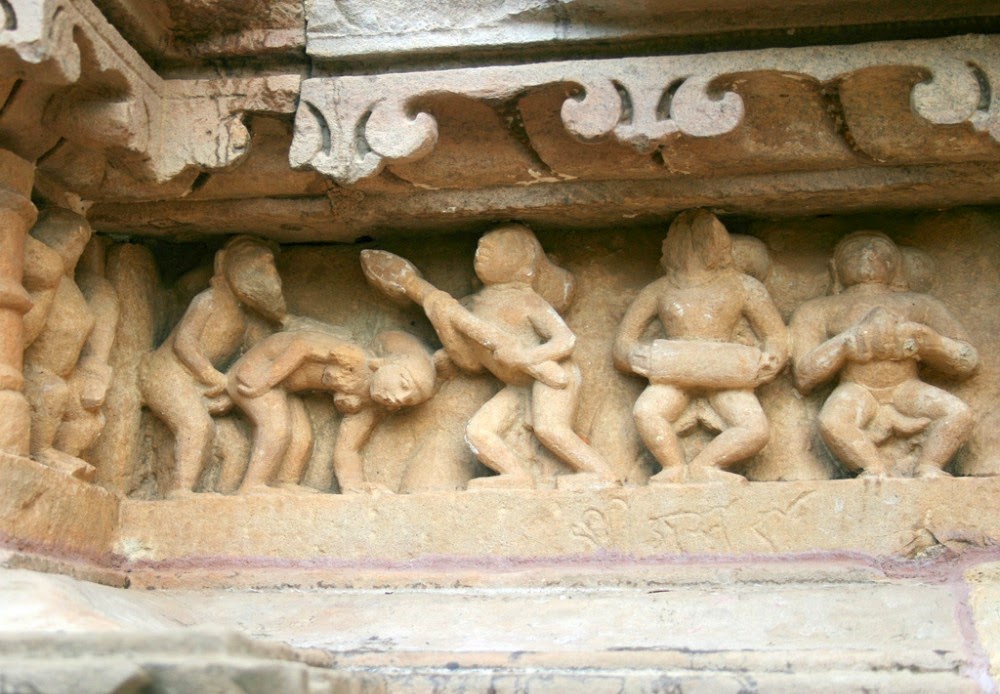 |
| Khajuraho-Erotic3 |
 |
| Khajuraho-Erotic9 |
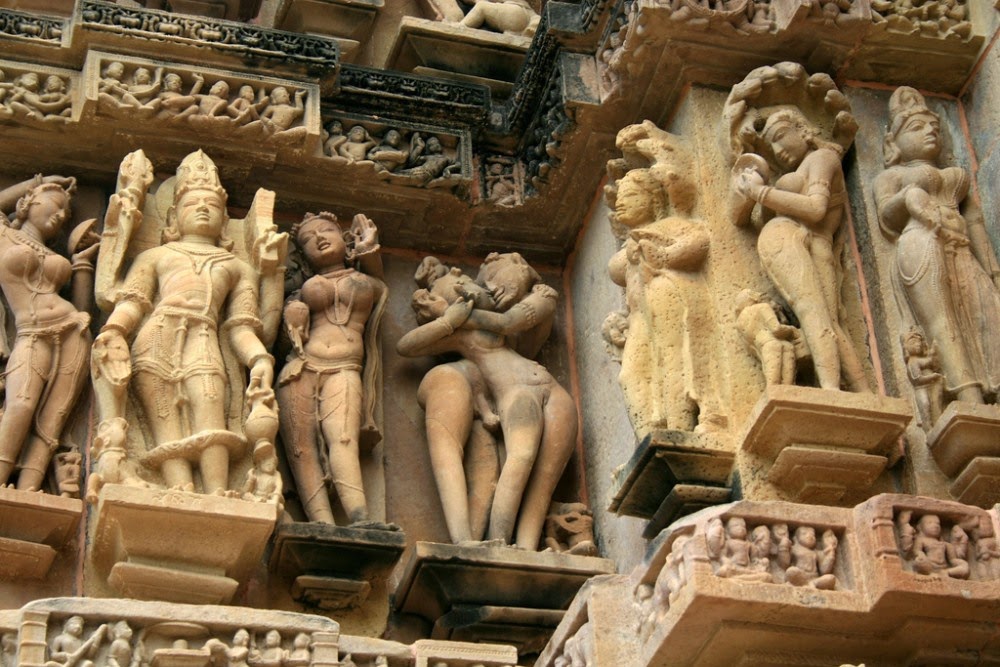 |
| Khajuraho-Erotic10 |
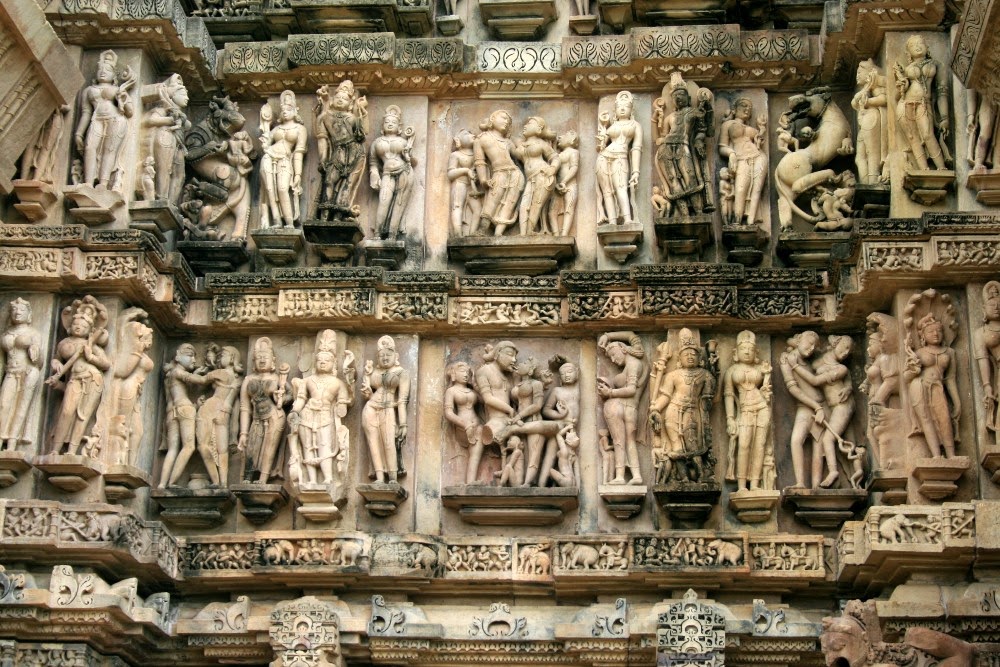 |
| Khajuraho-Erotic11 |
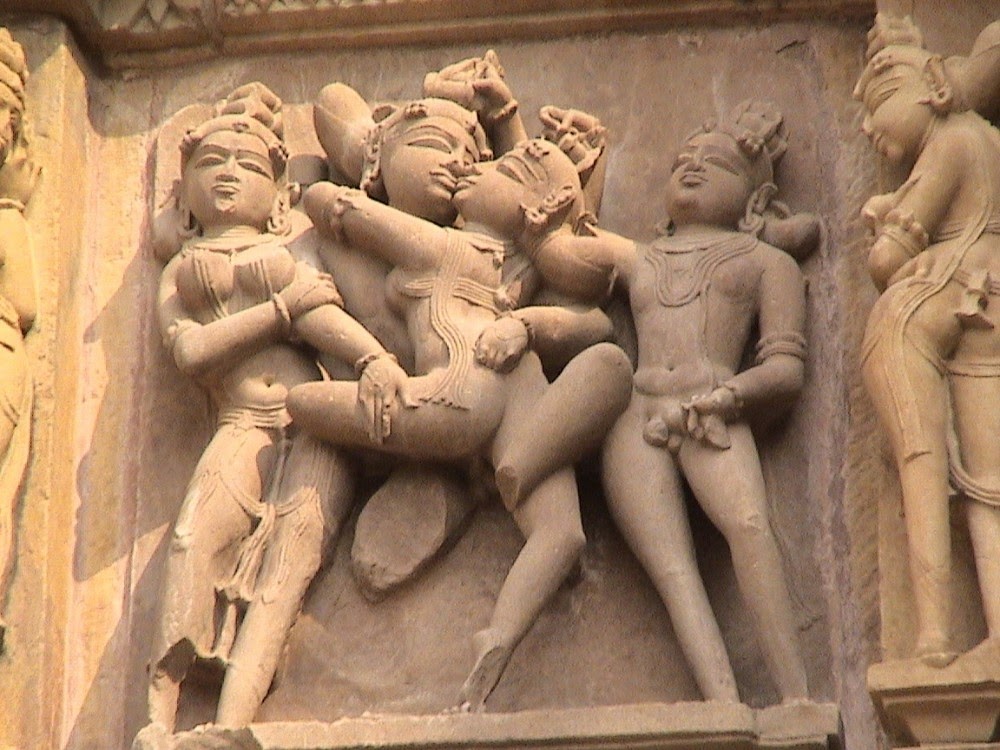 |
| khajuraho-erotic 13 |
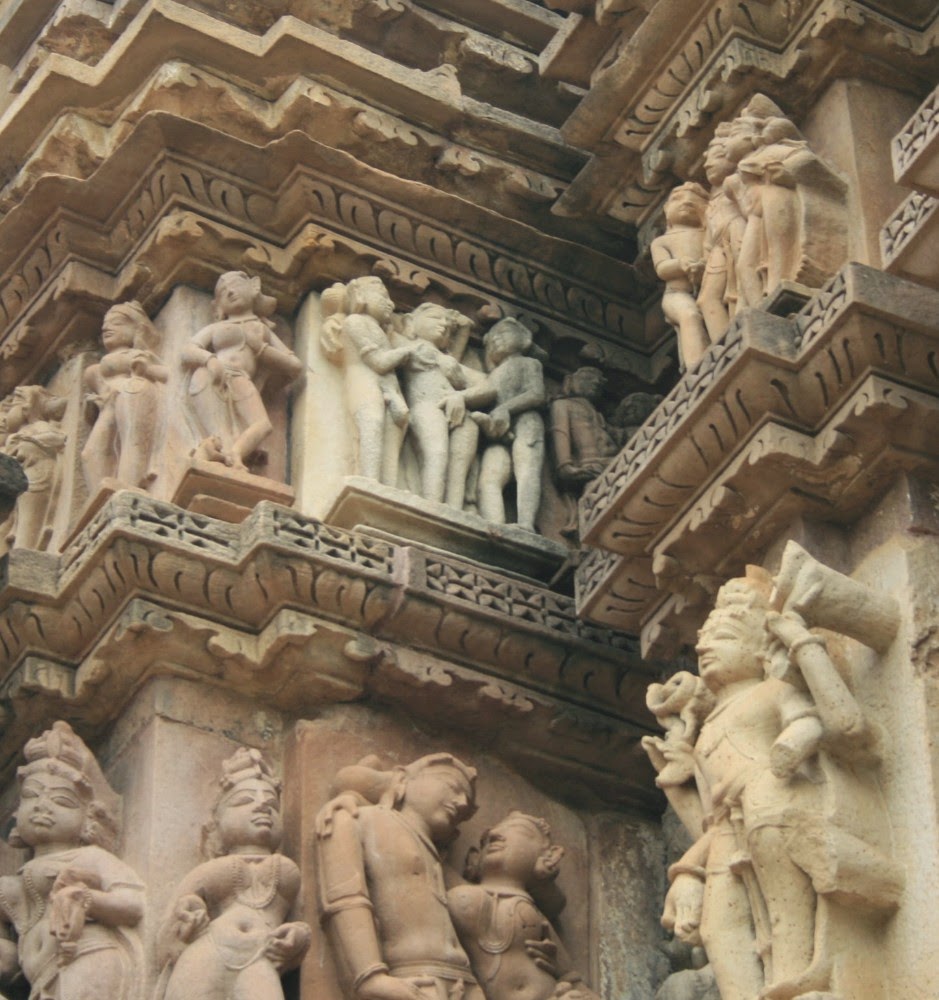 |
| Khajuraho-Erotic14 |
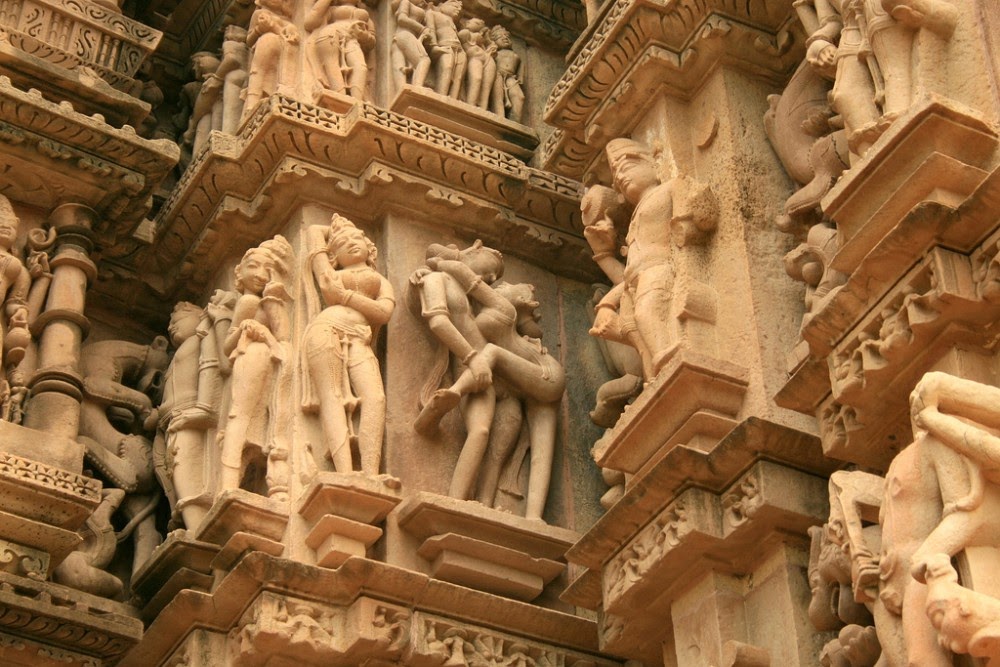 |
| Khajuraho-Erotic15 |
 |
| Khajuraho-Erotic16 |
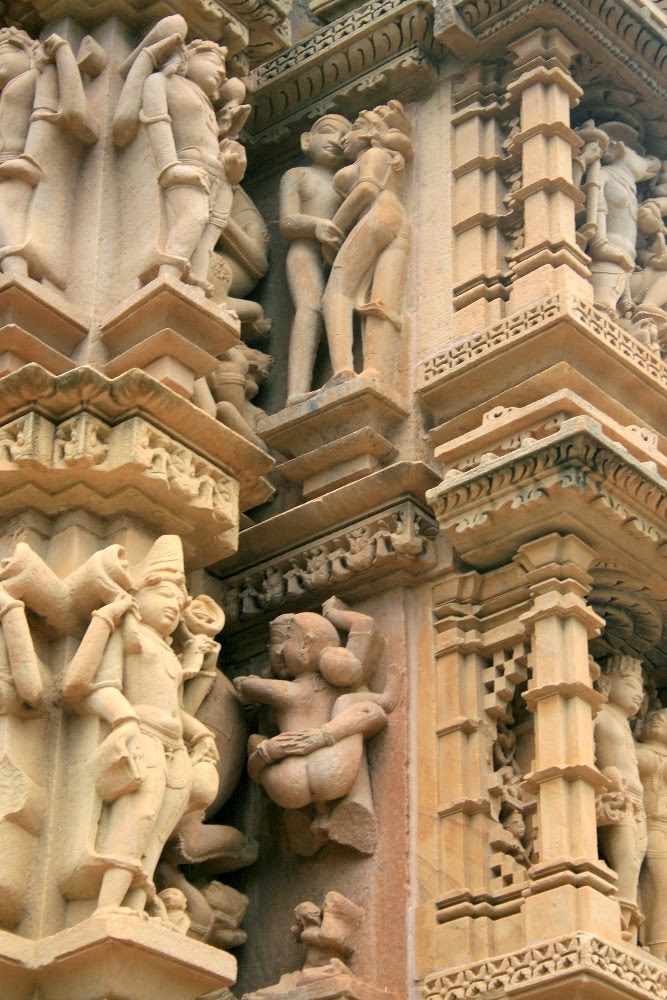 |
| Khajuraho-Erotic17 |
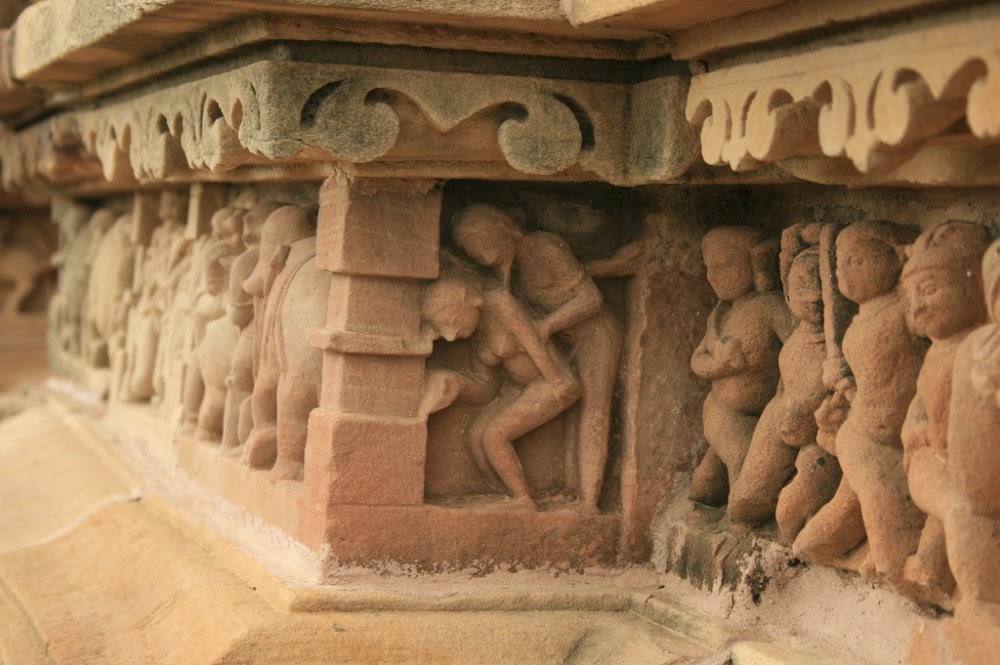 |
| Khajuraho-Erotic18 |
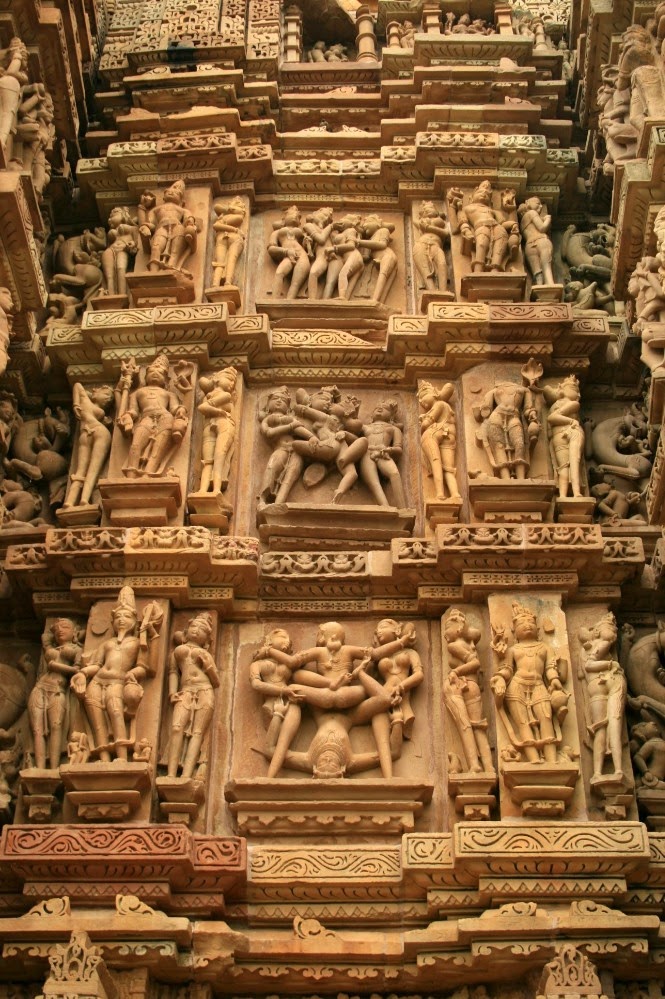 |
| Khajuraho-Erotic19 |
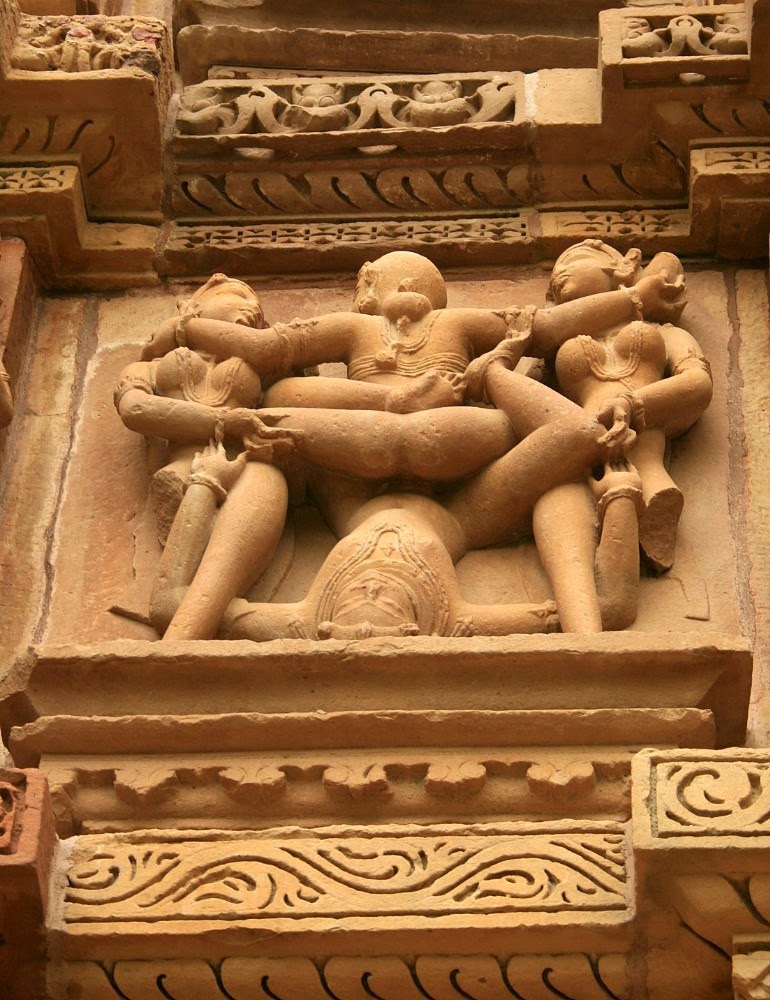 |
| Khajuraho-Erotic20 |
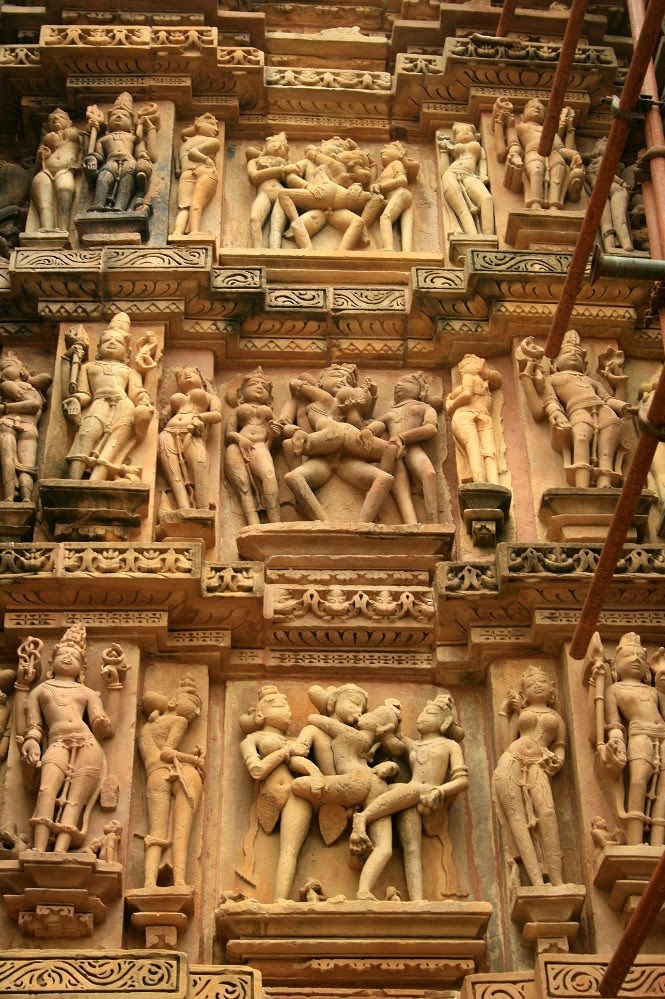 |
| Khajuraho-Erotic21 |
 |
| Khajuraho-Erotic22 |
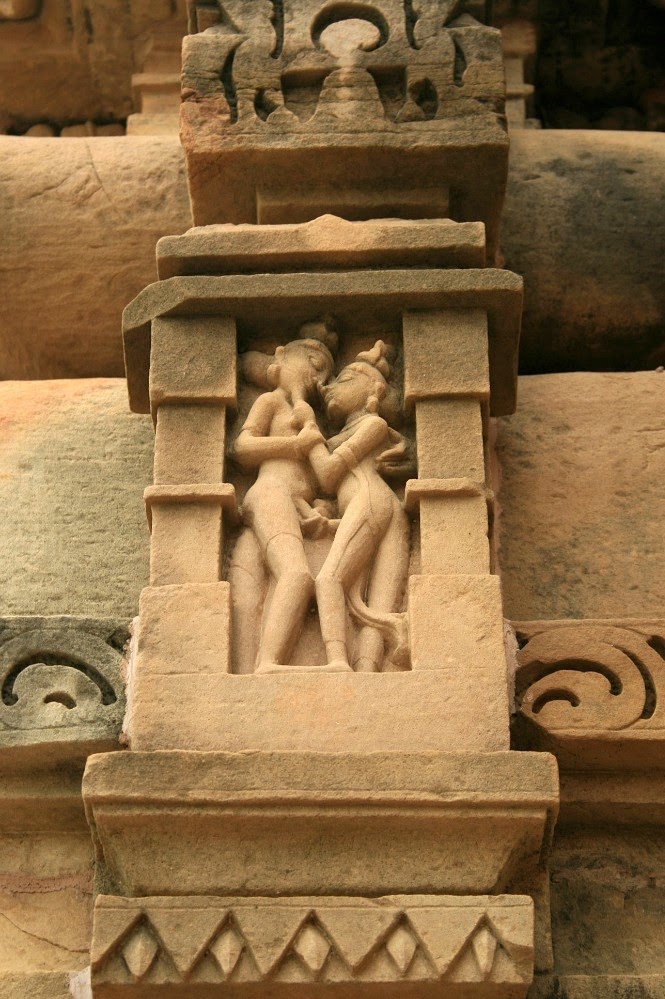 |
| Khajuraho-Erotic23 |
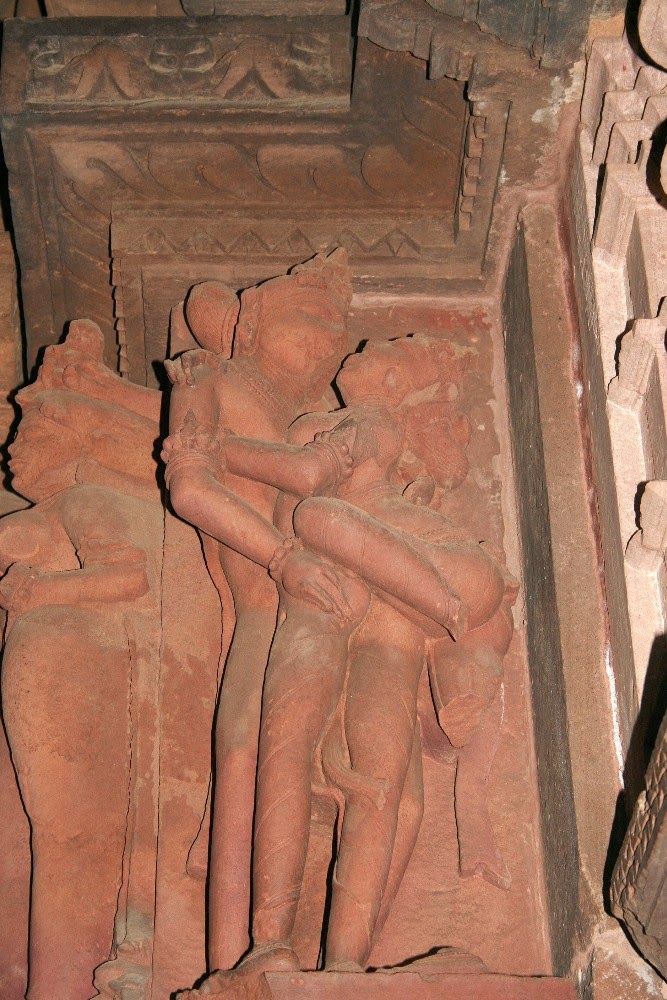 |
| Khajuraho-Erotic24 |
 |
| Khajuraho-Erotic25 |
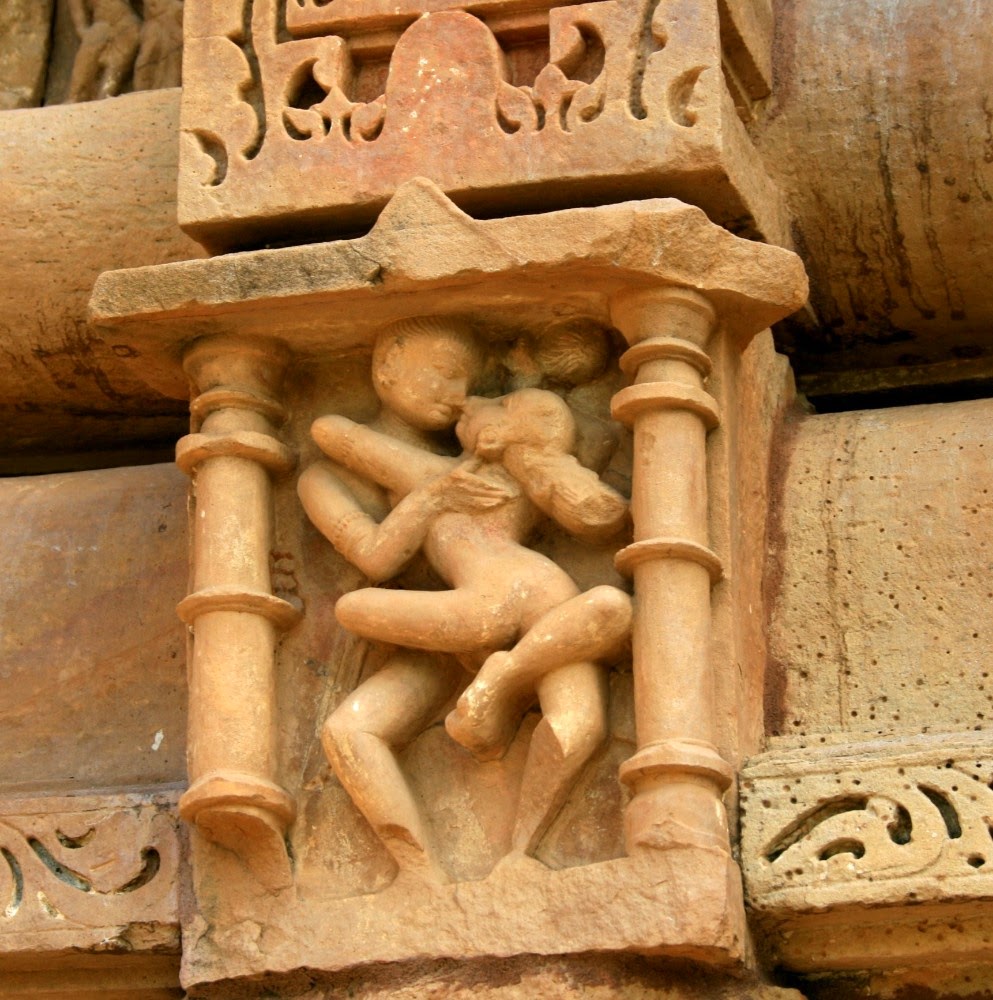 |
| Khajuraho-Erotic |
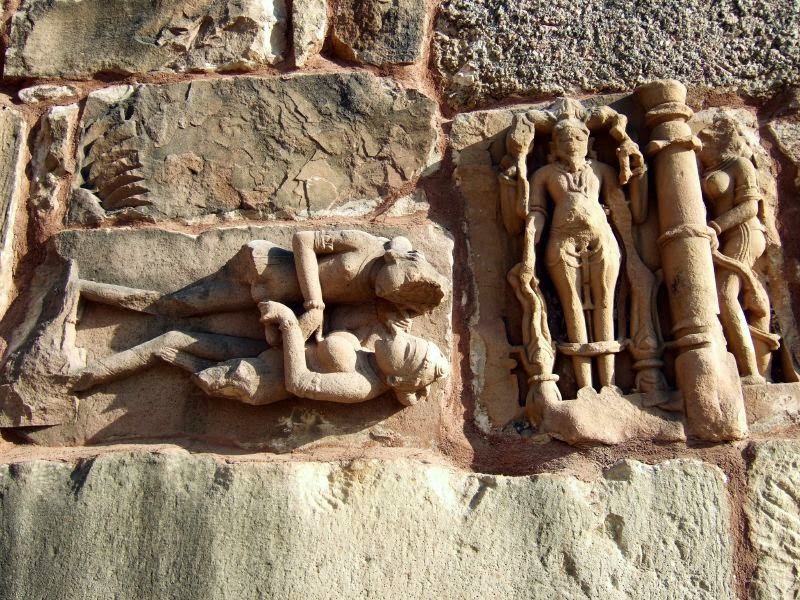 |
| khajuraho14 |
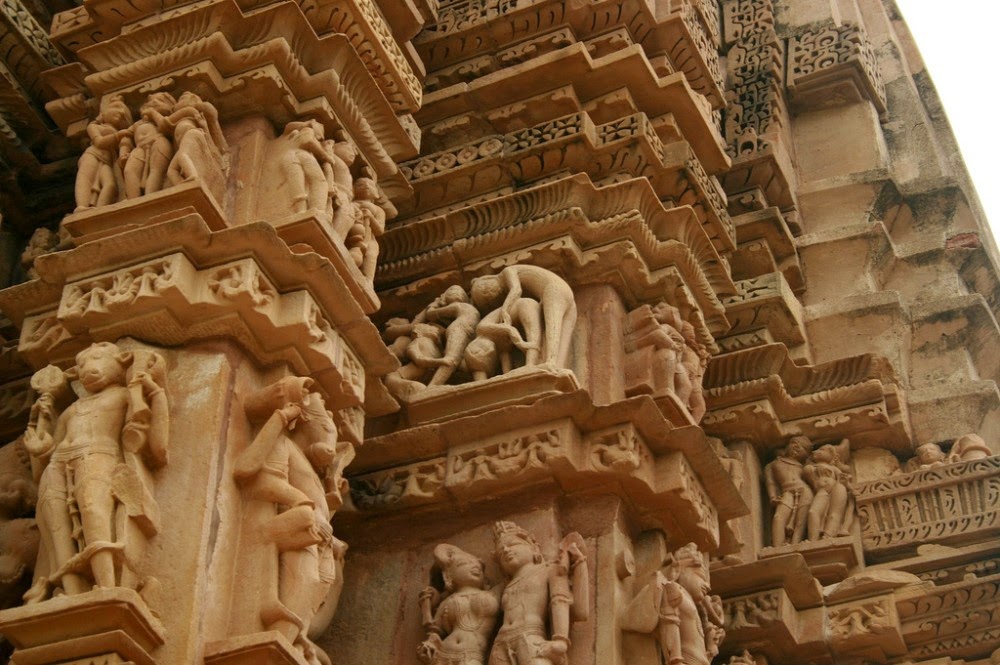 |
| Khajuraho-Erotic26 |
 |
| Khajuraho-Erotic27 |
 |
| Khajuraho-Erotic28 |
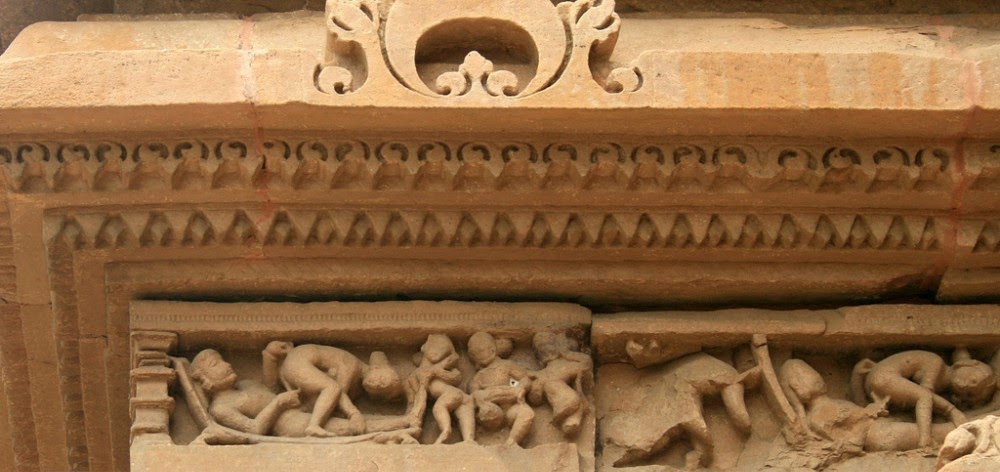 |
| Khajuraho-Erotic29 |
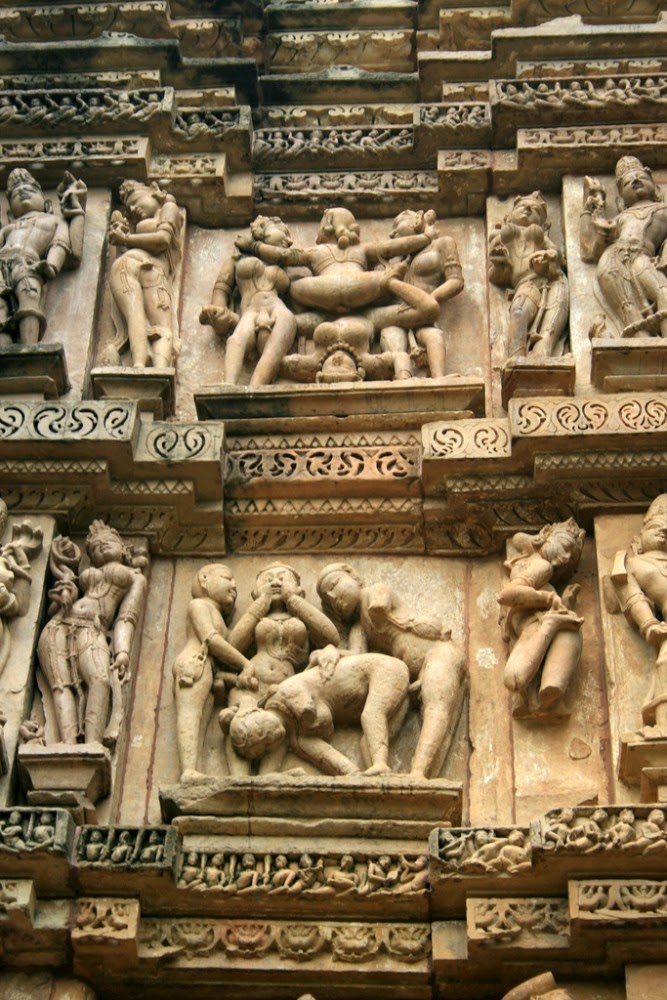 |
| Khajuraho-Erotic30 |
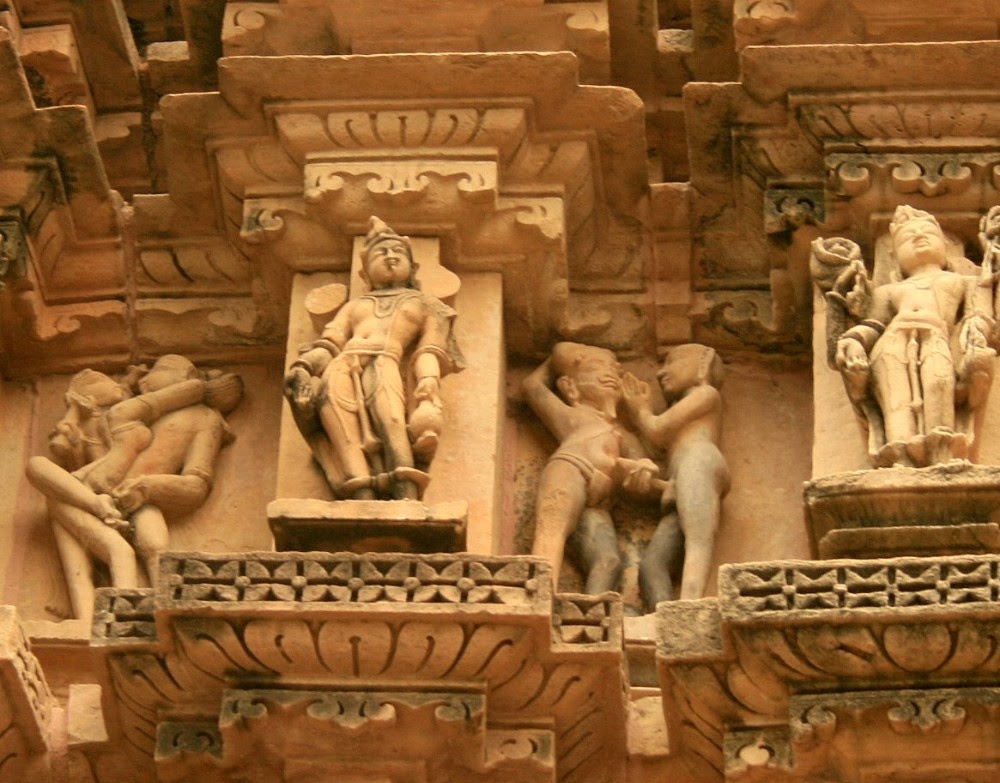 |
| Khajuraho-Erotic31 |
 |
| Khajuraho-erotic-sculpture-2 |
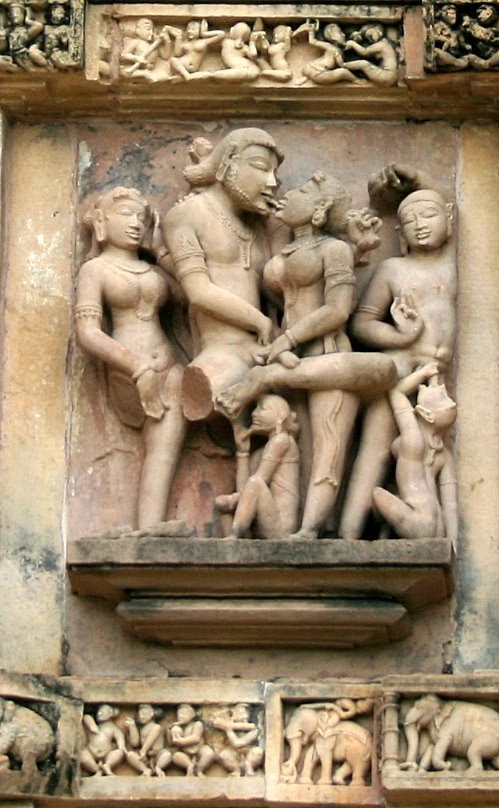 |
| Khajuraho-French-kiss |
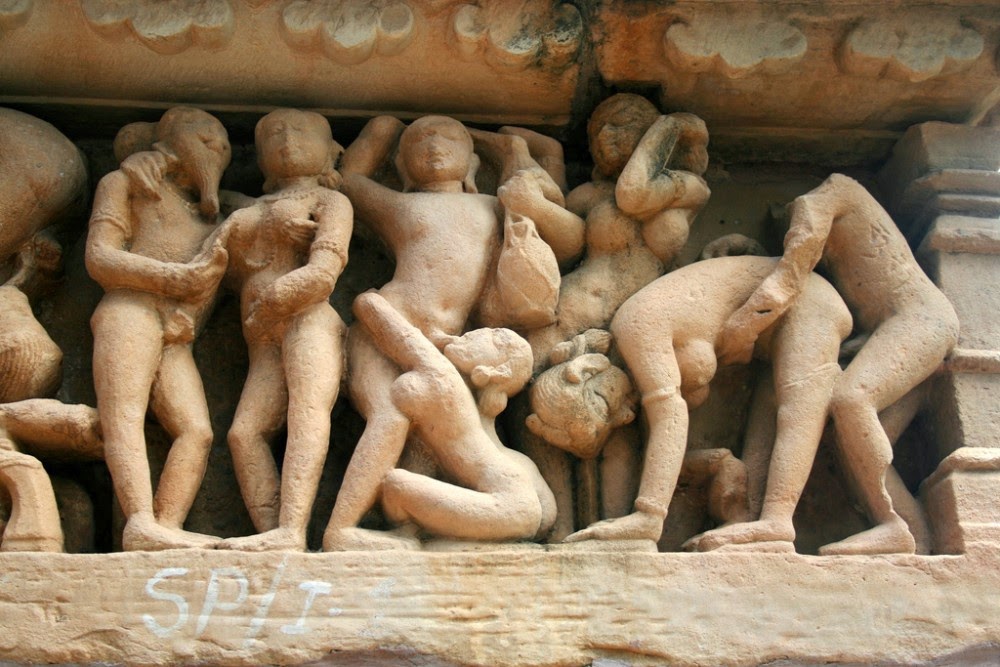 |
| Khajuraho-Party |
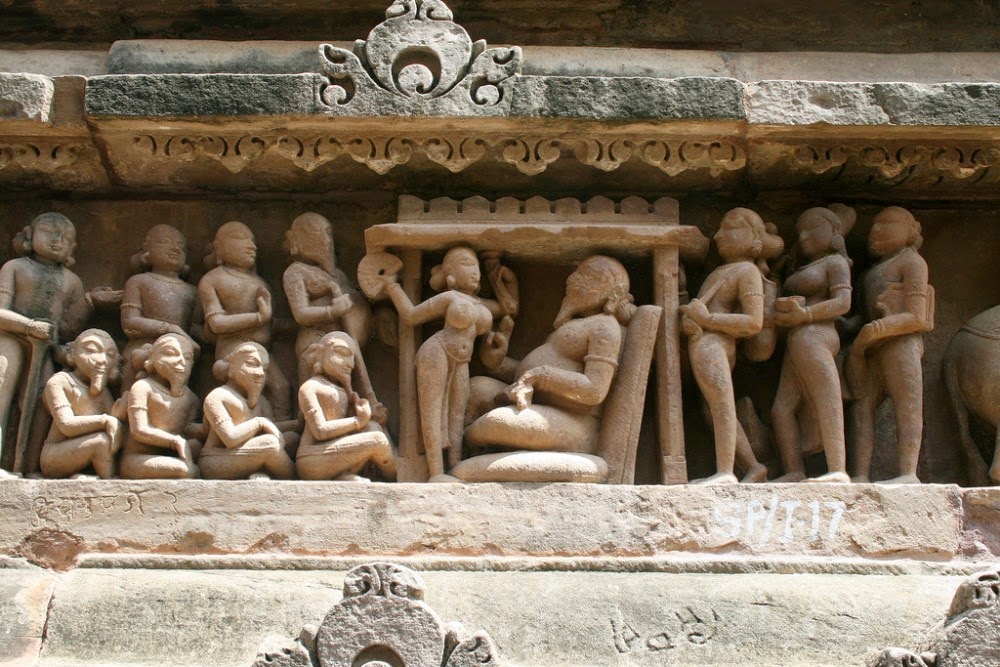 |
| Khajuraho-Royal-introduction |
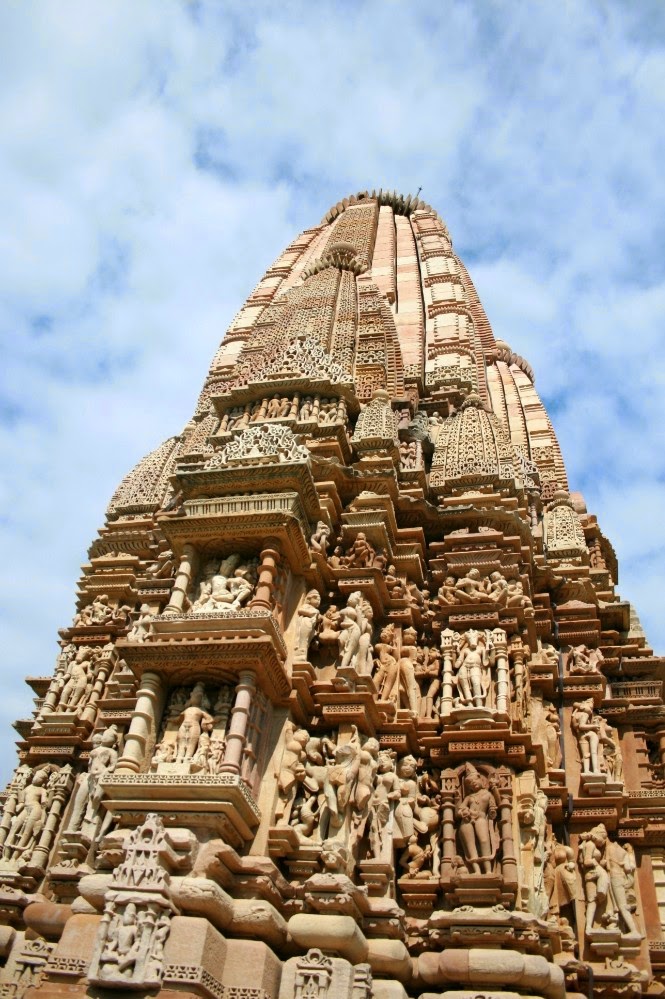 |
| Khajuraho-Temple a |
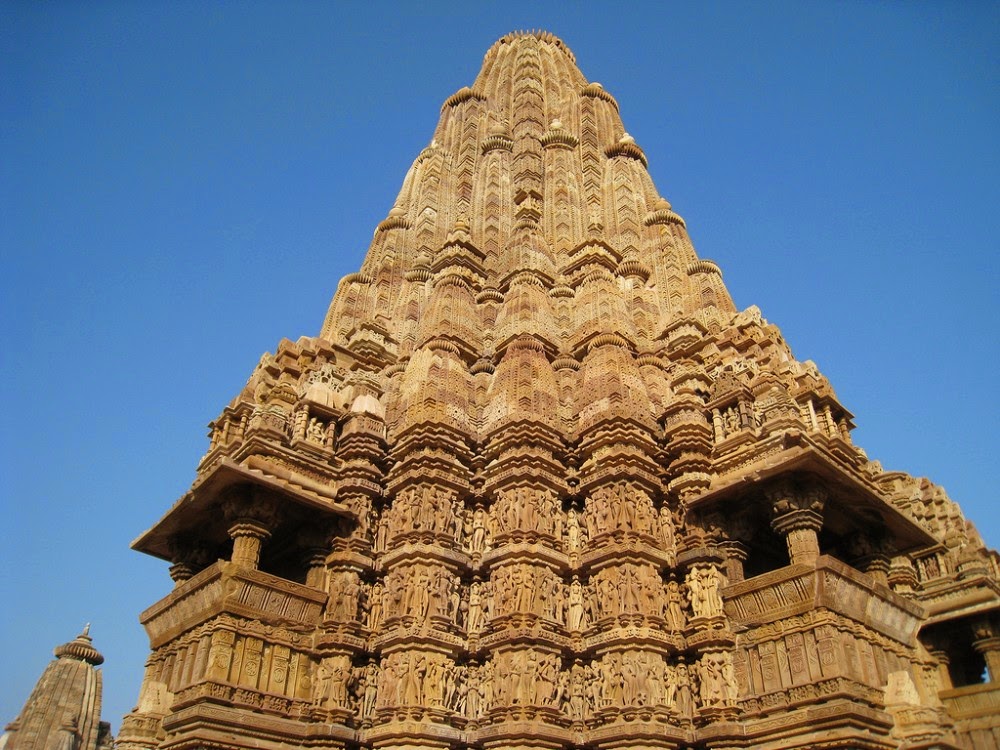 |
| Khajuraho-Temple-detail-1 |
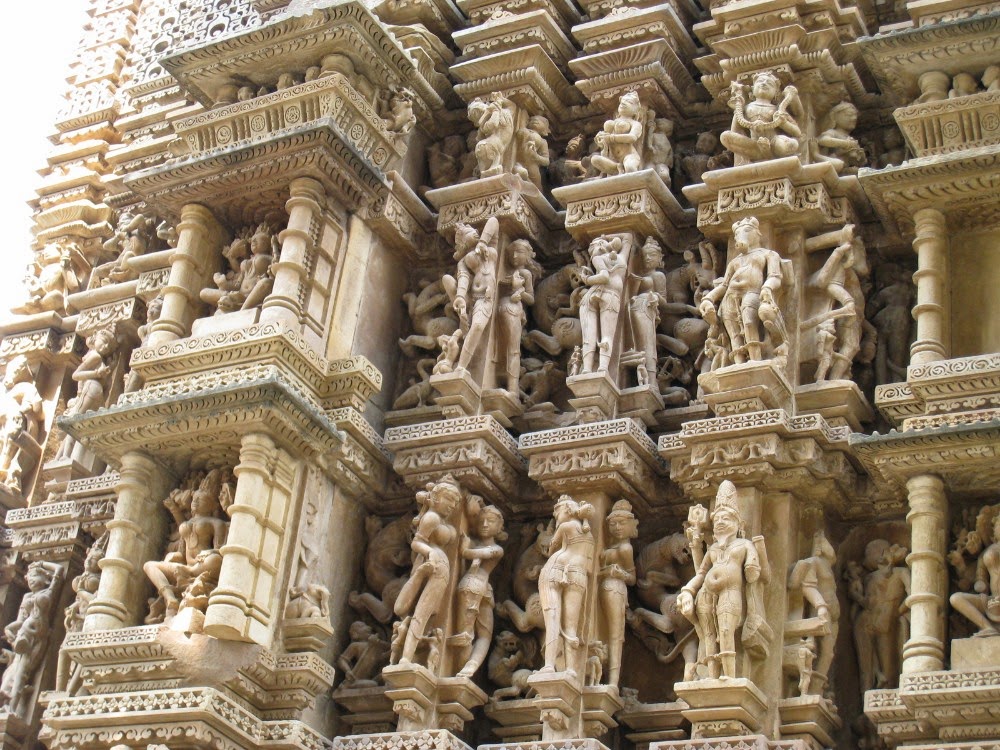 |
| Khajuraho-Temple-detail-2 |
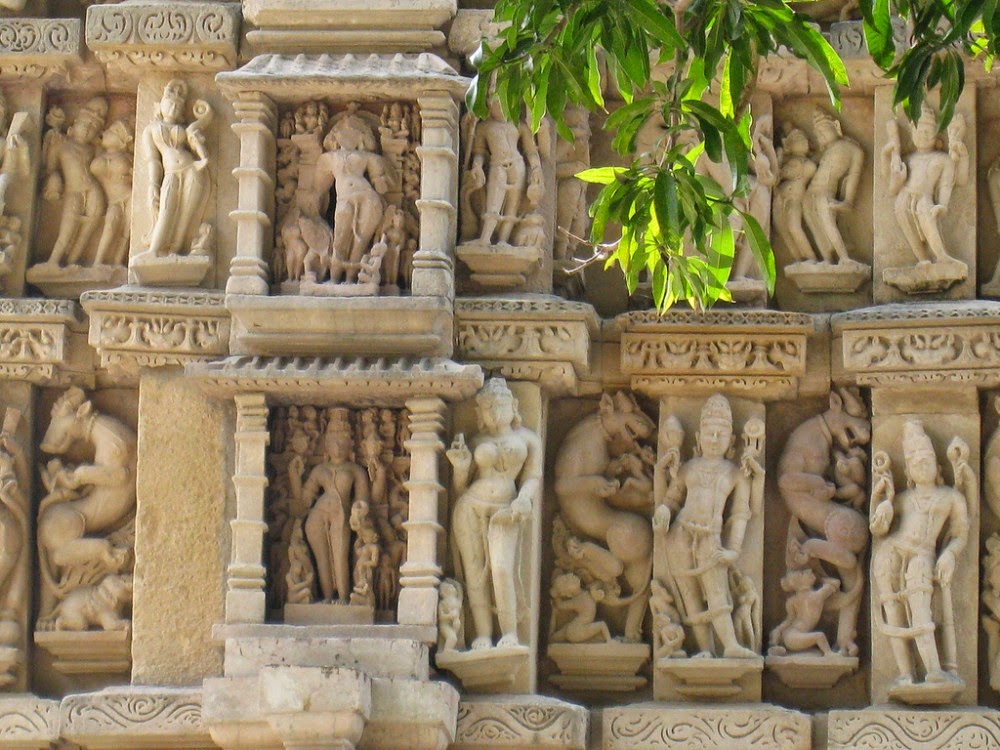 |
| Khajuraho-Temple-detail-5 |
 |
| Khajuraho-Temple-detail-6 |
 |
| Khajuraho-Temple-detail-7 |
 |
| Khajuraho-Temple-detail-9 |
 |
| Khajuraho-Temple-detail-12 |
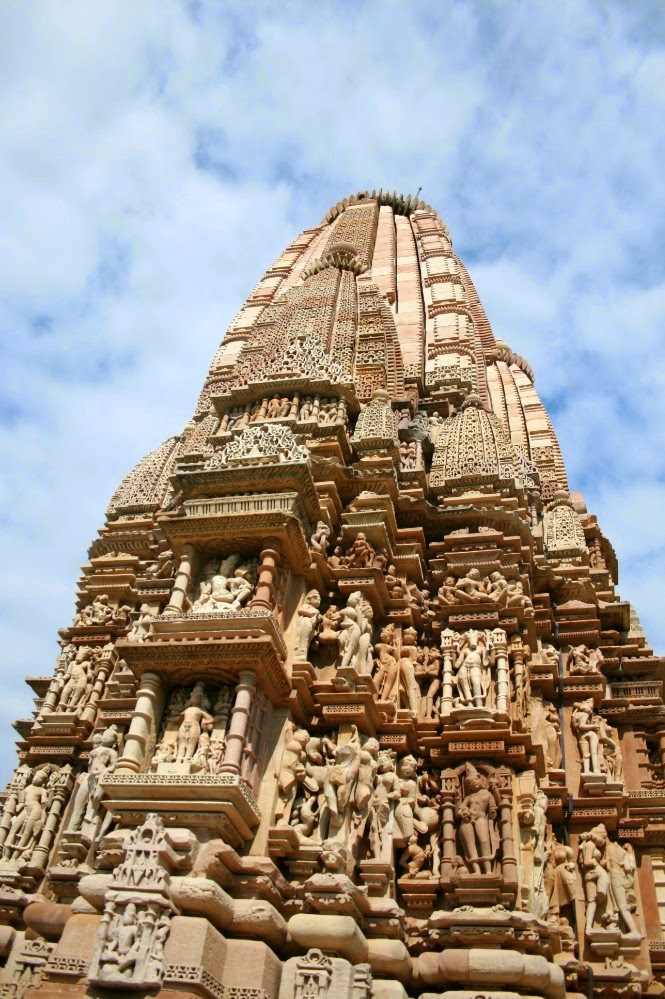 |
| Khajuraho-Temple |
 |
| khajurajo-horselovers |
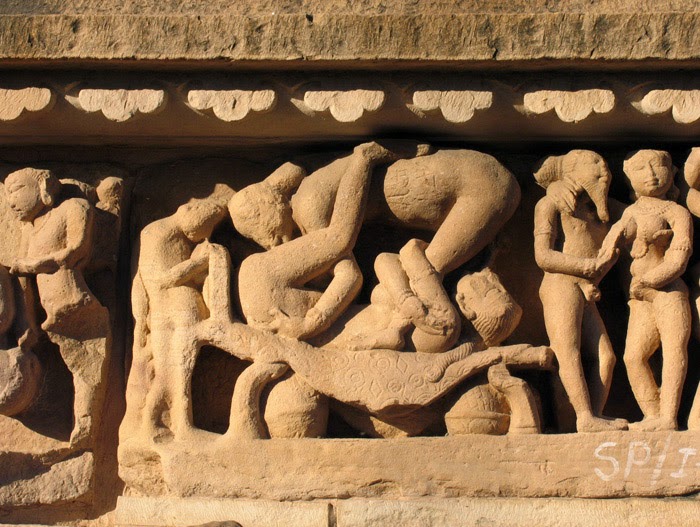 |
| love-in-afternoon |
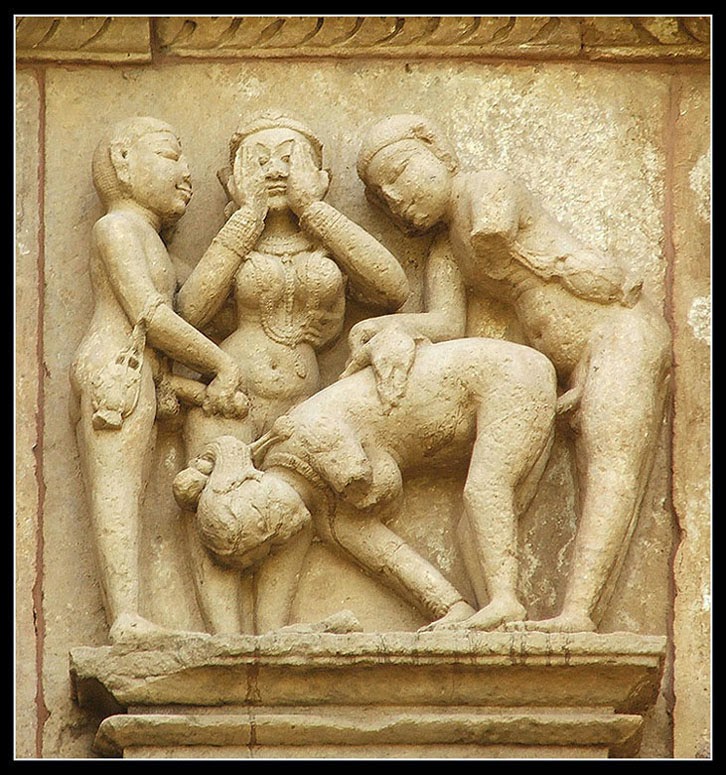 |
| medieval-pornography |
 |
| Most-Sensual-Sculpt |
 |
| photo-35 |
 |
| sculptures-at-lakshmana-temple |
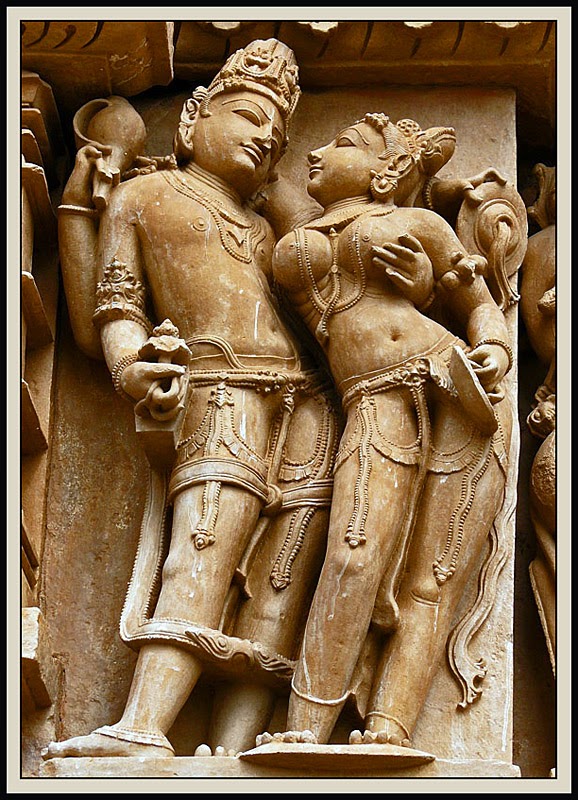 |
| Visvanatha-Temple-II |
 |
| Whos-doing-what |
*Original post date June 24, 2009
Further
reading
UNESCO World Heritage Site listing
*(Taken
from many sources)
wikipedia.org/wiki/
flickr.com
wherewebe.com
*All images
and text belong to their respective copyright owners.
I intend and believe that all of the graphics used to illustrate this article
either are in the public domain or, if copyrighted, appear here as fair use. This page is solely
informational and educational and intended for no other purpose than that as
well as being not for profit page.
Re-post Additional Comments:
|
nosauvelta wrote on Jul 6, '09, edited on Jul 6, '09
There are
35 sandstone temples –
Jain, Buddhist, and Hindu –
built in the 10th and 11th centuries.
The temples are covered inside and out
with erotic relief sculptures
symbolizing mystic union with the deity.
The sexual symbolism is stark.
There is pure beauty and no perversion in these temples.
The eroticism of Khajuraho is part of the larger
Hindu view of the cyclicality of life.
'There are different opinions on why temples were decorated with sexually
explicit sculptures. One group argues that the old kings lived in obscene
luxury and that they used these for excitement.
Another group thinks that it was part of sexual education in ancient India:
since most people visited temples, it was an appropriate place for mass
communication.
Some scholars say that since Hinduism believes in the efficacy of all four
paths to Moksha (Dharma, Artha, Yoga, and Kama), these sculptures were
provided to assist in the last of these four paths.
Since these sculptures are limited to the outer walls of the temples, some
people interpret them as a symbolic gate to reaching God. It is possible that
at the time just preceding the construction of these sculptures, monastic
Buddhism was prevalent, people were losing interest in the householder-life,
and the temples were built to attract people to sex and family life and to
renew Hinduism.
Some others go to the extent of saying that the Khajuraho temples themselves
are built upon the model of an ultimate seductress.
The steps are like the feet, the Ardhmandapam are the knees, the Mandapam
represents the curvaceous thighs, the sanctum-sanctorum is like the ovaries,
and since it is very dark where the Linga is installed, it represents the
sexual organ, etc.
"All of life is God's magic;" we are all parts of divinity; Hindu
scriptures argue that to attain moksha, and to dedicate ourselves to dharma
and adhyatma, one should first experience sexual fulfillment. The one who
wrote the Kamasutra was none less than a sage! When the Gods themselves
cannot escape the web of erotic love (Kama), what about us mere mortals?
For a long time, the pundits have wondered why it was necessary to decorate a
place of worship with sexual material, but if one observes the materialistic
thoughts of Hinduism, there is nothing unnatural about them.'- K.L. Kamat
Great set
of pics
|
edit delete reply
Glad to
know
you like them.
Hello, Pete.
Welcome to my site :-)
so
experimentation was encouraged even then...
|
Kamasutra
as we understand,
deals with the science to
attain the best carnal ecstasy.
The objective of Kamasutra
was to educate methods and
purpose of attaining sexual satisfaction.
Khajuraho temple walls have
most sexual poses inscribed
in ancient text of Kamasutra....
|
|
|
not easy
while standing... even then
|
|
Not easy,
yes,
but in ancient Indian Art
and ritual practices,
everything were based on the
reality of life involving Karma (destiny)
and Kama (carnal ecstasy) together.
The belief was fulfillment of
both functions was the
way to attain moksha (spiritual way to heaven).
Therefore, sex was as sacred
as other holy rituals -
any position would not be
difficult as it may seem.
|
|
|
back
breaking...
|
|
back
breaking, so it seems -
but, it is good physical exercise.
|
|
|
69?
|
|
69...
What better way but
to give and receive simultaneously-
having the best of both worlds.
|
|
|
indeed....
some how 69 is more of giving and taking than missionary which is some how
dominating than sharing
|
|
yes... but
kamasutra is comprehensive..not just posses ( asanas)
|
|
|
well..
some additions... Karma just means literally.. JOB.. belief was that each one
was born to do a karma as assigned to him by his caste, context directions of
elders/ teachers ( gurus) etc..u do your JOB well u get rewards..
Kama is a larger word than just sex.. Kama is passionate desire for anything
sex, food, for fine art...
Karma was and Kama was set for each stage of life and they were different for
each stage
1. shishava... before two years from birth
2. Balya ..from 2- 7
3. vidyarthi.. 7 to 14 or 18 from birth... at this stage one must have a kama
( desire) for knowledge, stay at the guru's gurukul ( guru's place of stay)..
grass hut away from human settling to enable Guru to teach and to do penance.
one stayed away from parents and lived very ascetic life this stage karma was
to follow Guru's instructions without question, serve him and his wife
devotedly
4. gruhastha ashrama... family life .. kama is to produce children, karma is
to take care of spouse and children and be responsible and serve the desha (
country ) and uphold dharma ( religion) .. collection of artha ( property and
money)
5. sanyasa.. or vanaprastha.. to give up all worldly desires,, actually go to
forest or Himalayas and do penance .. search of truth search of god.. search
of answers... to attain Moksha.. moksha literally means freedom,,, freedom
from the cycle of birth, death, and rebirth and soul ( atma) joins big soul (
paramatma - god)
|
|
Good
additional info, Halli :-)
Thanks...
I never thought Karma
can be regarded as mere job.
I see it as either striving
to do good or be the Devil's tool
and thus Lady Justice scales tip,
a verdict is reached,
the judgment is reaped...
|
|
|
Karma ..
ad verbatim .. means job.. just that... a JOB ... then if u do a good job it
is called sukarma.. bad / evel job is kukarma...
so when a hindu goes through a bad phase in life he blames his karma..
meaning that he did a eveil thing and now he is getting punished and when he
suddenly gets riches ( of any type ,, not just money he ascribes to again his
karma..
|
|
Thanks,
Halli :-)
Now enlightened as
to the true meaning of
Karma, not fate
or predestination,
but 'doing' or action...
|
|
|
On that
note,
may we all
live our lives with
the intention to propagate
the process of Sukarma:
good actions, good results.....
|
|
when i say
job i mean deed, action... not employment
|
|
|
su karma
is not just doing 'good jobs' it also means doing ones jobs with dedication..
'job ' as a father, lover, son, employee, citizen... work itself is
worship...
|









































































.jpg)
.jpg)

.jpg)



































































Fantastic architecture, beautiful photos.
ReplyDeleteAbsolutely!
ReplyDeleteSuch captivating edifices,
great handiwork of some
very great sculpting genius!
It is surprising, though,
that the Chandel kings,
who created these
have left no stone inscriptions,
which might enlighten us
on the history of those times.
Even then, there exist awesome
engraved poetry through these figures in stones-
you can virtually see them
thru the vivid expression of
most delicate emotions in
these stone figures...
(most are of men and women
idolized in various erotic and lustful poses).
But the questions we might
have in mind --
Why this sort of idolization
based on sexual erotomania had
been accommodated in these
holy shrines,
which should be dignified
as abodes of sublimity?
Is there any spiritual mystery behind it?
What could have been happening,
during the construction of such temples?
Glad you liked this, Rudi :-)
poetry in stone...
ReplyDeletePoetry in stone, indeed!
ReplyDeleteand much more....
A celebration of man's glory,
his Promethean quest for
humanly possible omnipotence,
self-sufficiency and complete
mastery over nature.
It is no mere idle dream -
with the visible fragrance of earth,
looking long and intently
with visionary eyes,
from the strivings of the mind
comes forth great works of aesthetics,
the power and grace of design,
as he becomes one with nature
in a sense profounder even
more than the poetic imaginings
that most of us can ever understand...
Welcome back, Halli...
in fact this work of art for worship is grander than Taj. Complete and comprehensive and shows how sex was honorable and openly accepted at those times, another aspect that is not highlighted often is that these were hindu kings who built temples of Buddism, Jainism and hinduism teaching us all a degree of tolerance of other religions.. Wish Obama and Osama ( and many present day leaders of India and pakistan) jointly visit this place to learn that lesson
ReplyDeletethis temple, like many others reflect some deeply ingrained Hindu philosophy. For a human.. four objectives were set. Dharma ( religion) artha ( money.. material belongings) kama ( desires,, sex,,,) Moksha ( Nirvana.. freedom from the cycle of birth and death.. joining the supreme being) .. all four were regarded as equally important and a balance has to be achieved by the human in his pursuit of these four. There was no taboo on sex or erotica or sexual experimentation and was treated as an integral part of life
ReplyDeletein fact this work of art for worship is grander than Taj. Complete and comprehensive and shows how sex was honorable and openly accepted at those times, another aspect that is not highlighted often is that these were hindu kings who built temples of Buddism, Jainism and hinduism teaching us all a degree of tolerance of other religions.. Wish Obama and Osama ( and many present day leaders of India and pakistan) jointly visit this place to learn that lesson
ReplyDeleteIt's wonderful to read
ReplyDeleteyour insightful comment. :-)
Thank you...
Although we cannot just
tune down the fairytale-like
magnificence of a structure
built out of sheer love
by Emperor Shah Jahan,
Khajuraho is not just about
a “degenerate society obsessed with sex",
it is more than just the erotic.
Rather, it is a place where
one stands in awe by
the power of human endeavor,
one feels a sense of peace,
like a sense of the 'eternal',
like every corner is
an expression of divinity
and human love,
every stone connotes
a unity of faith
whether it be Jainism,
Buddhism or Hinduism.
Most likely, Obama won't
have the time to make a visit
and glean wisdom from the
wondrous tales of the past
from these 22 (out of 85) temples...
thx
ReplyDeleteyou're much welcome...
ReplyDelete